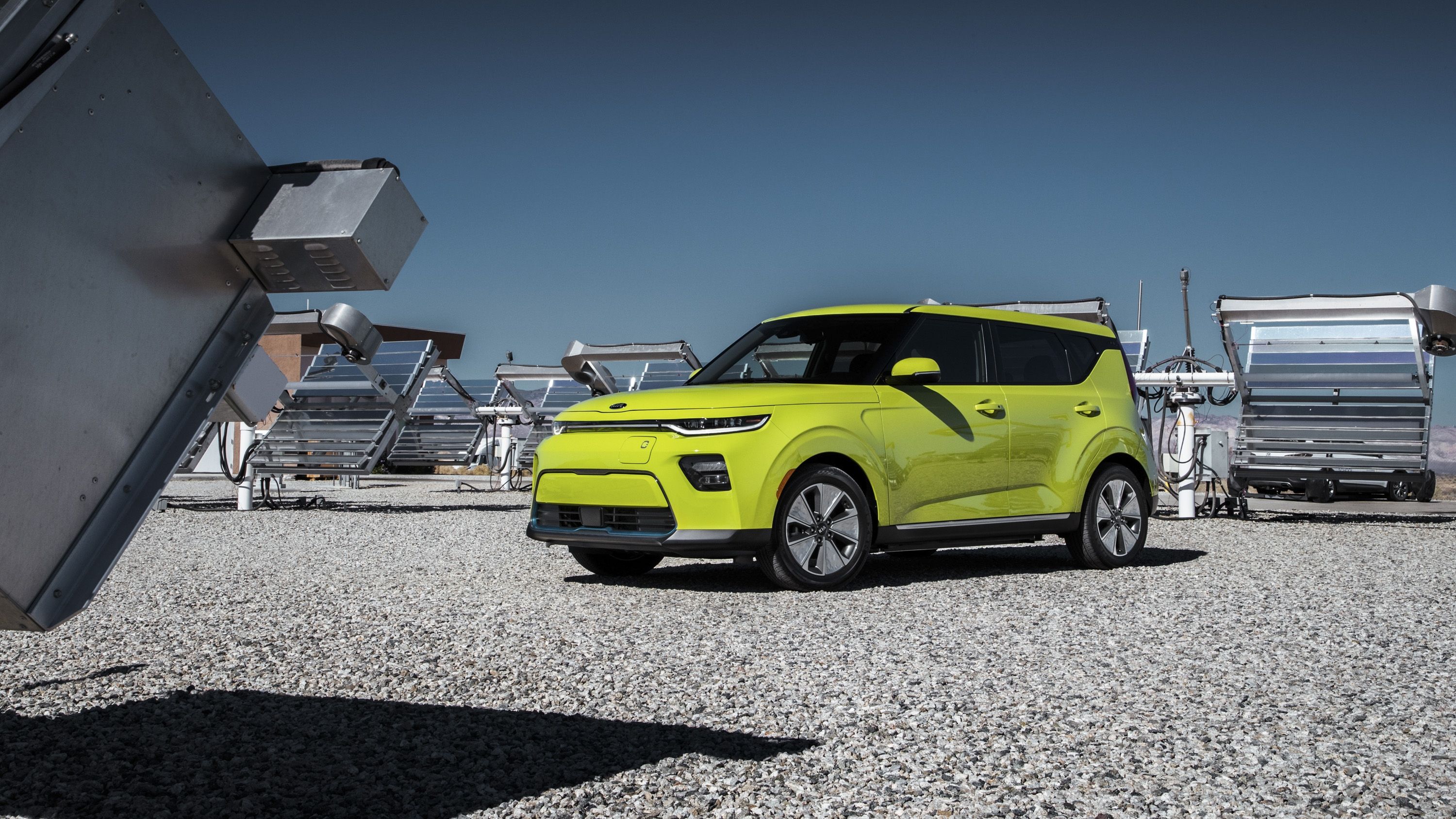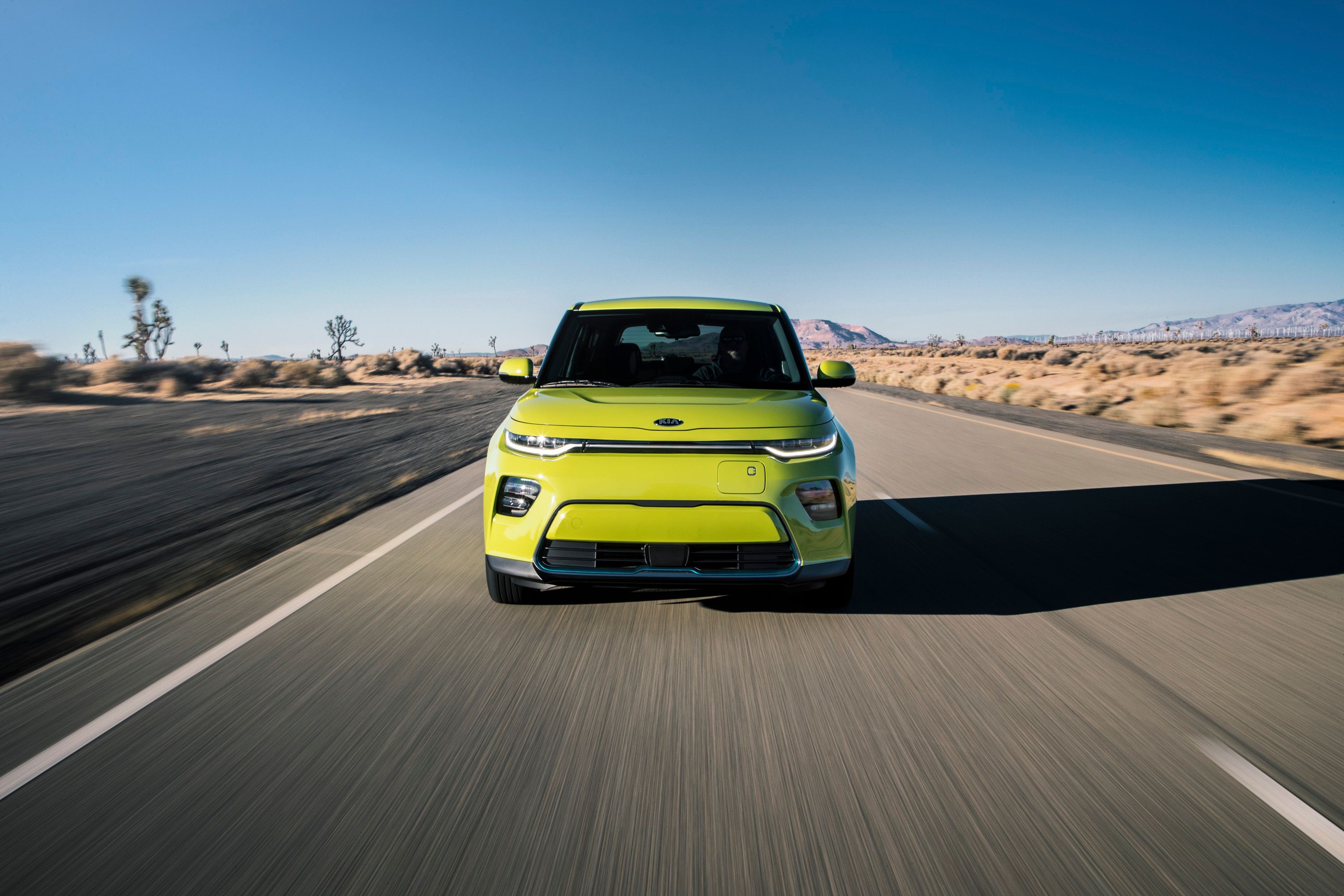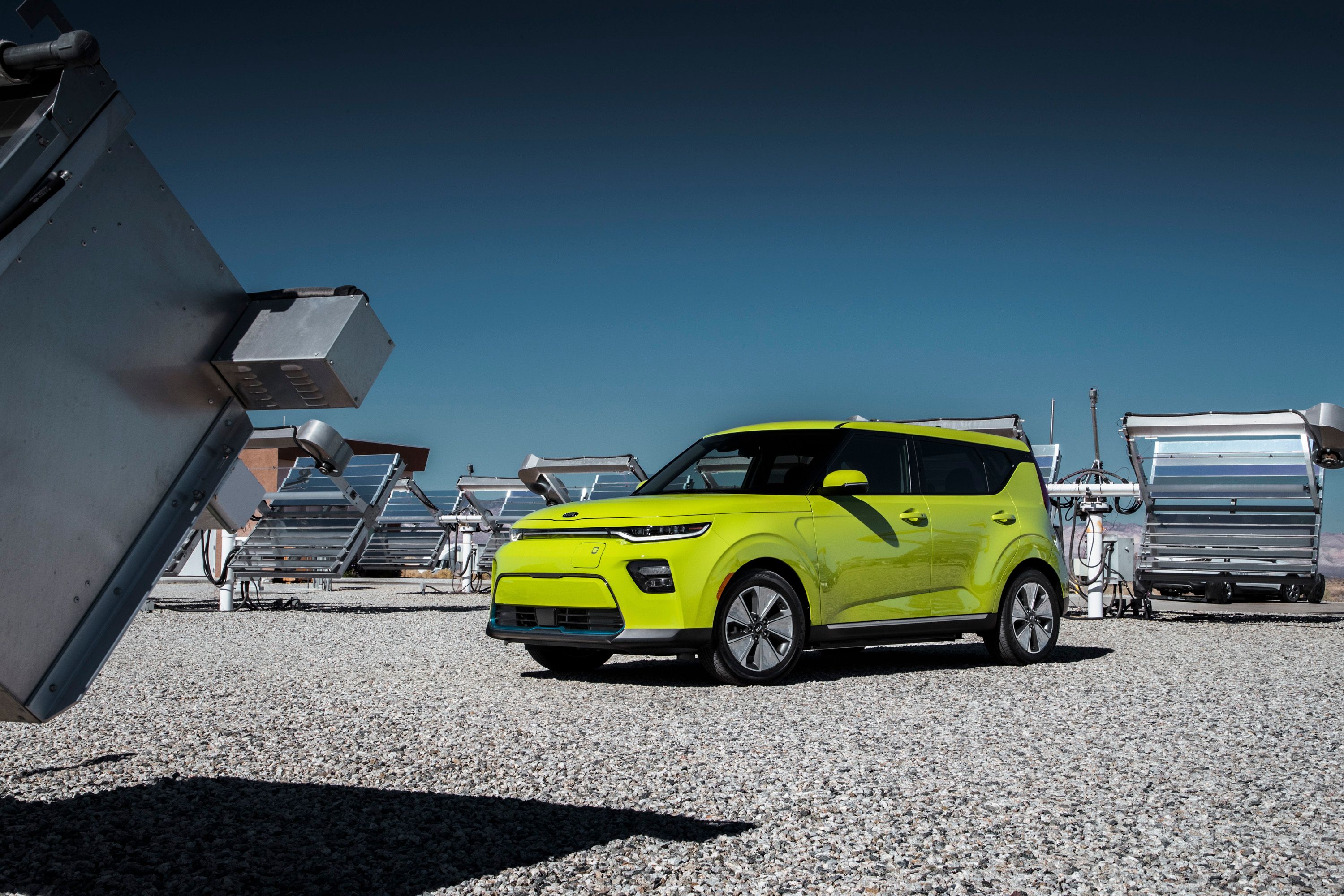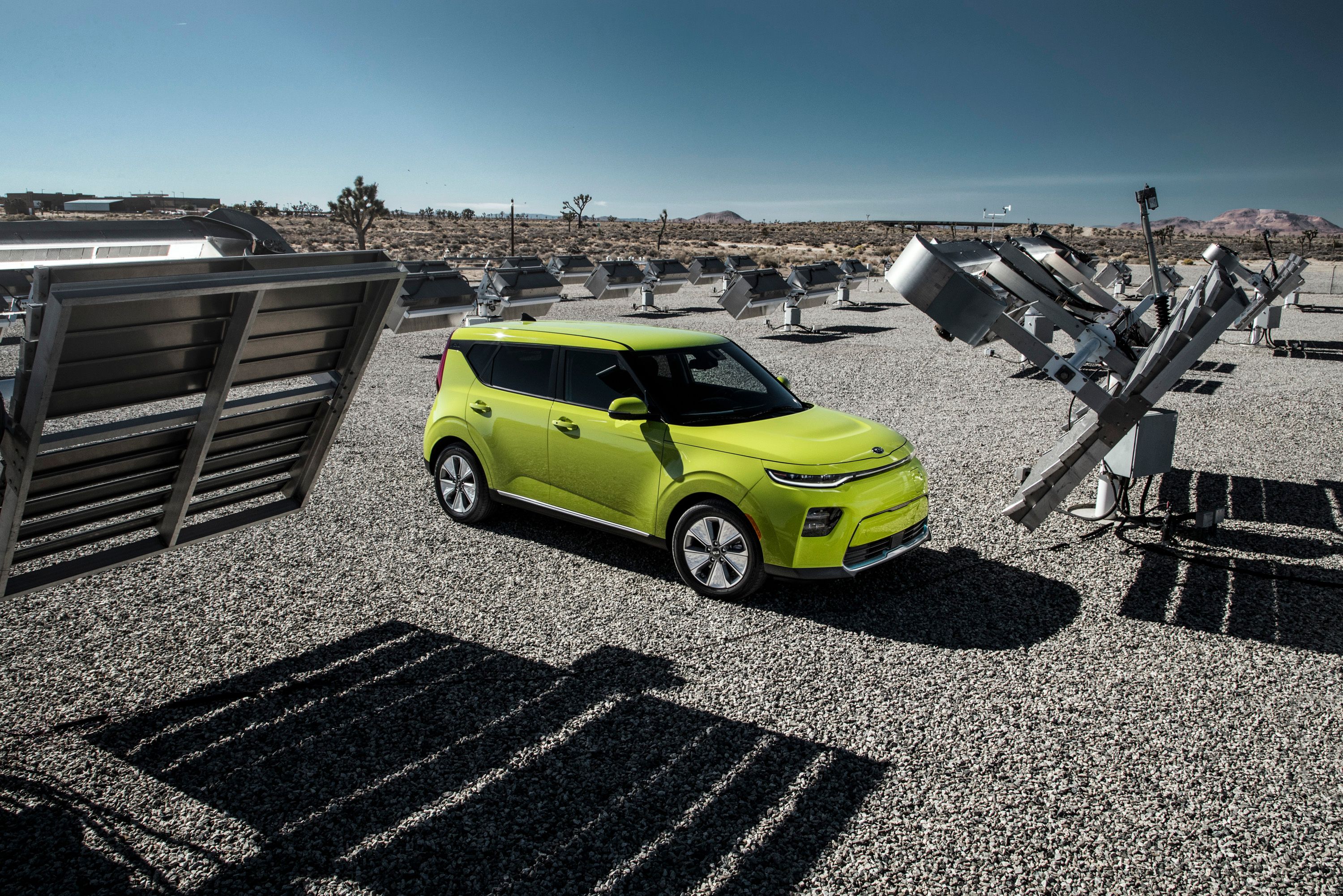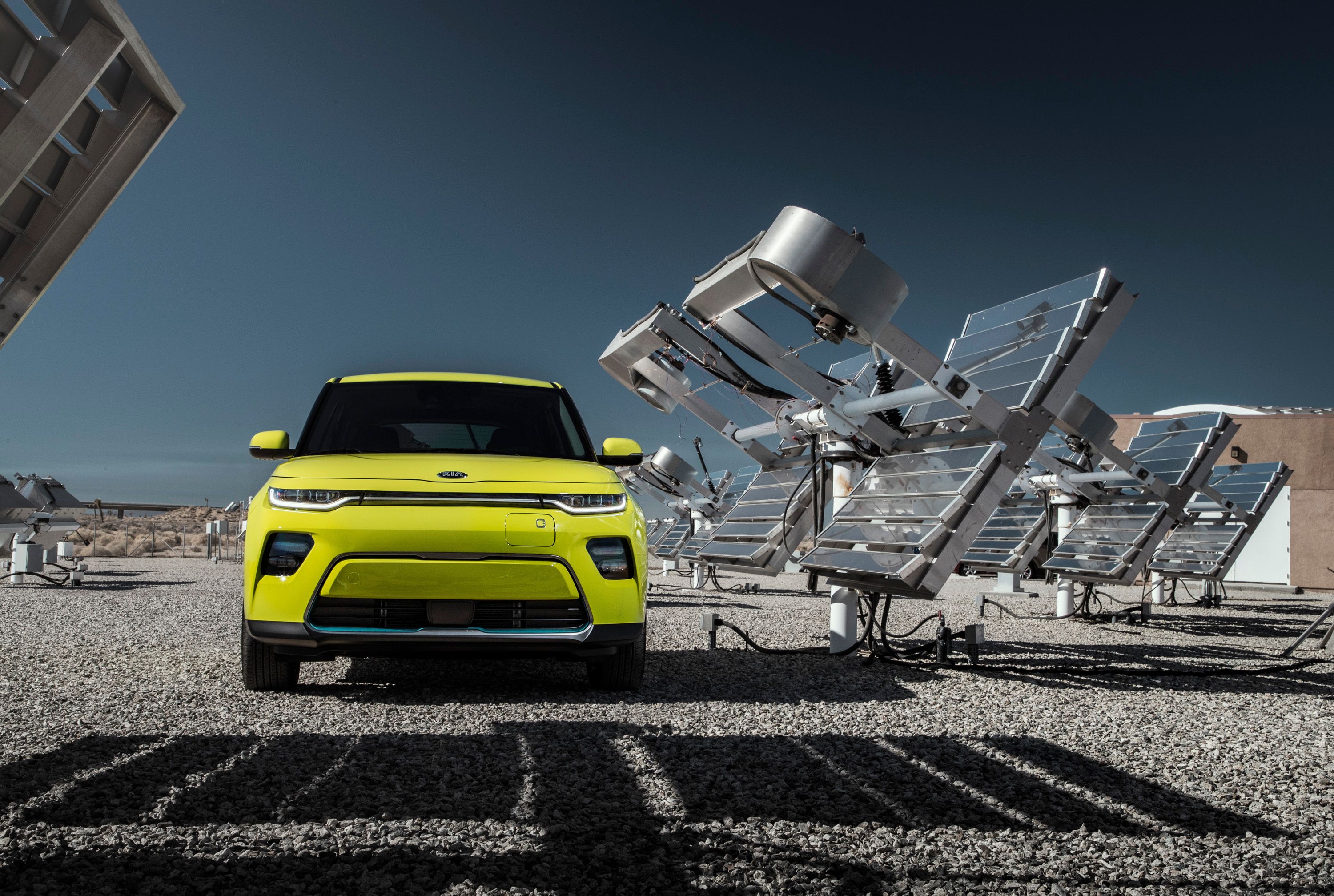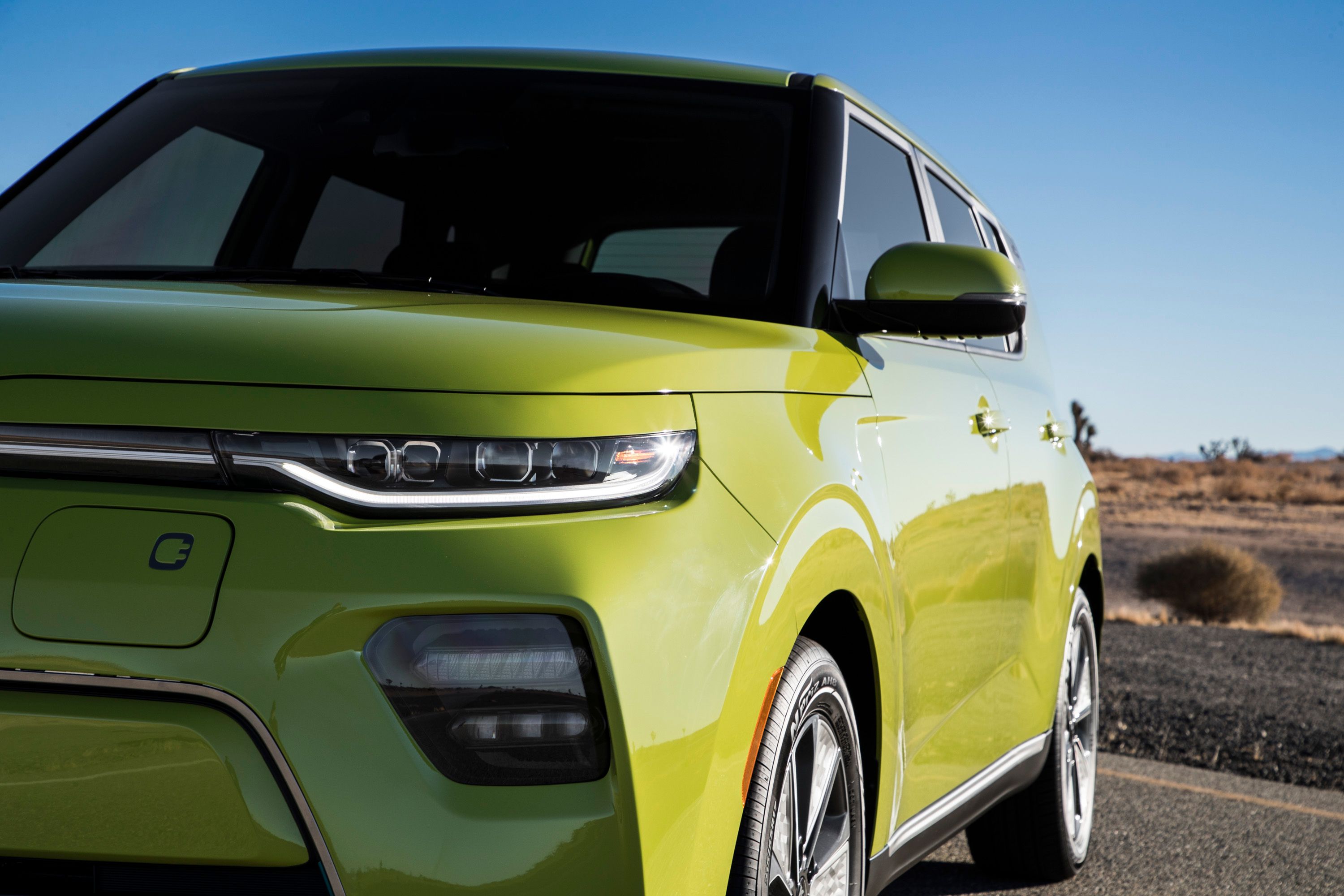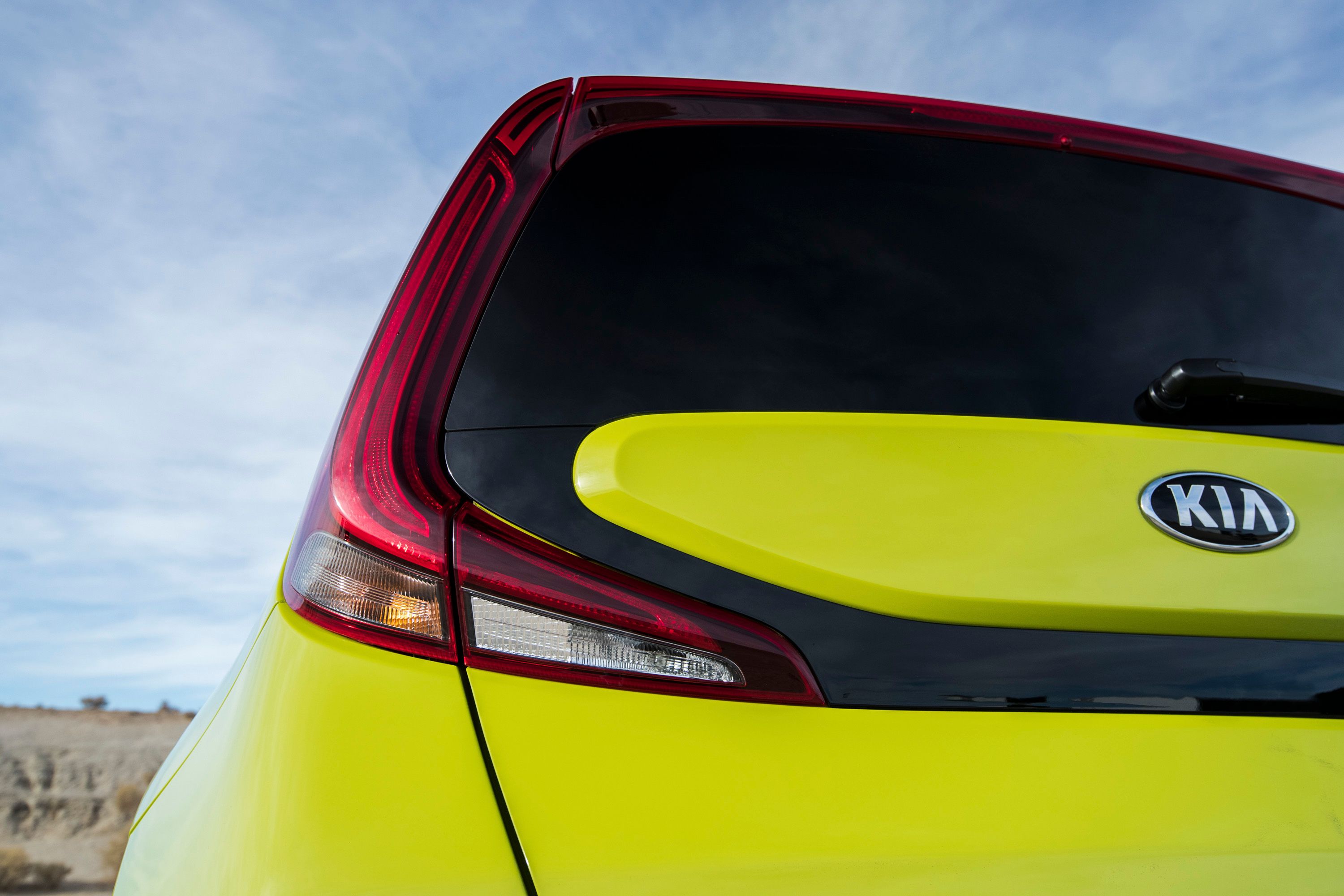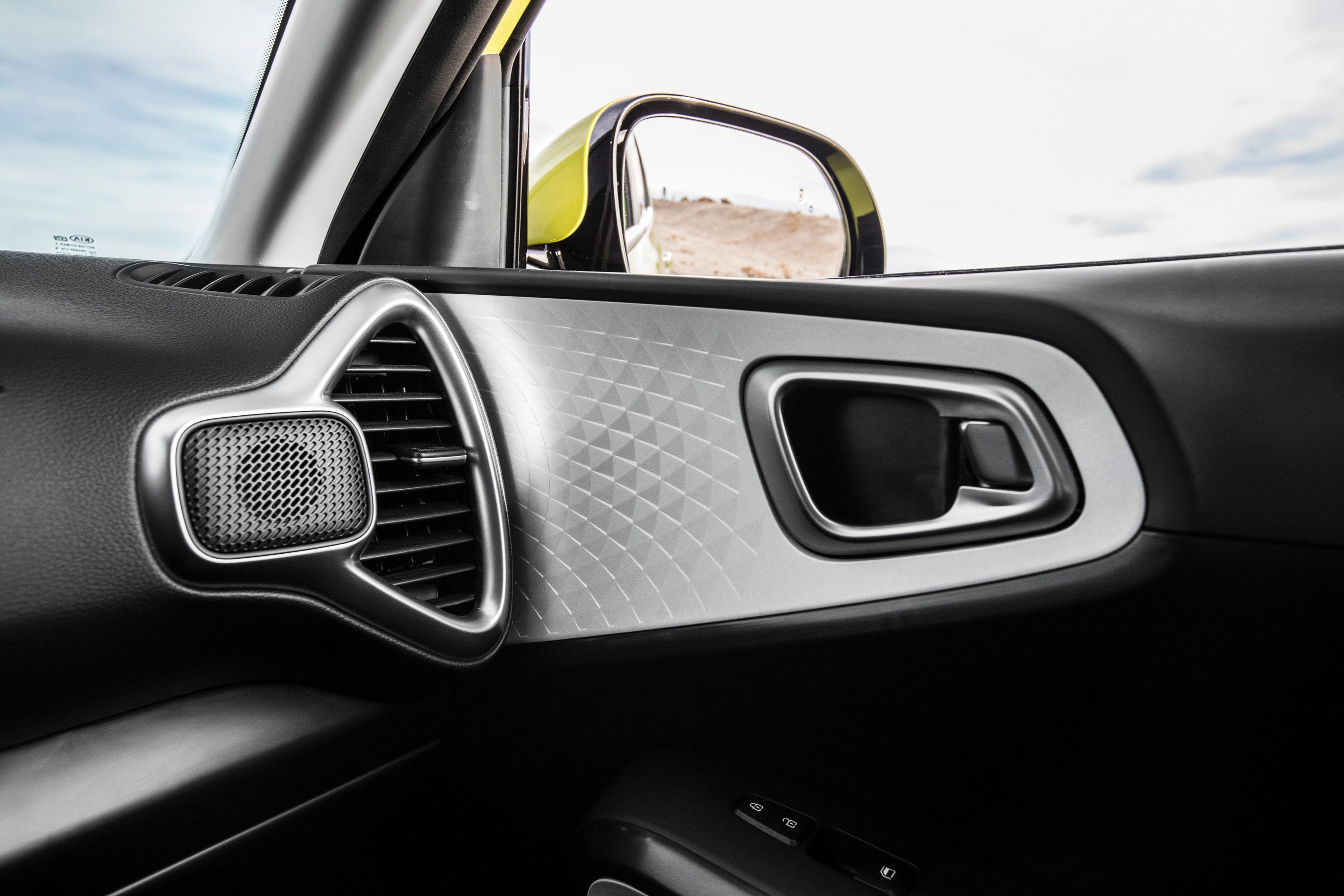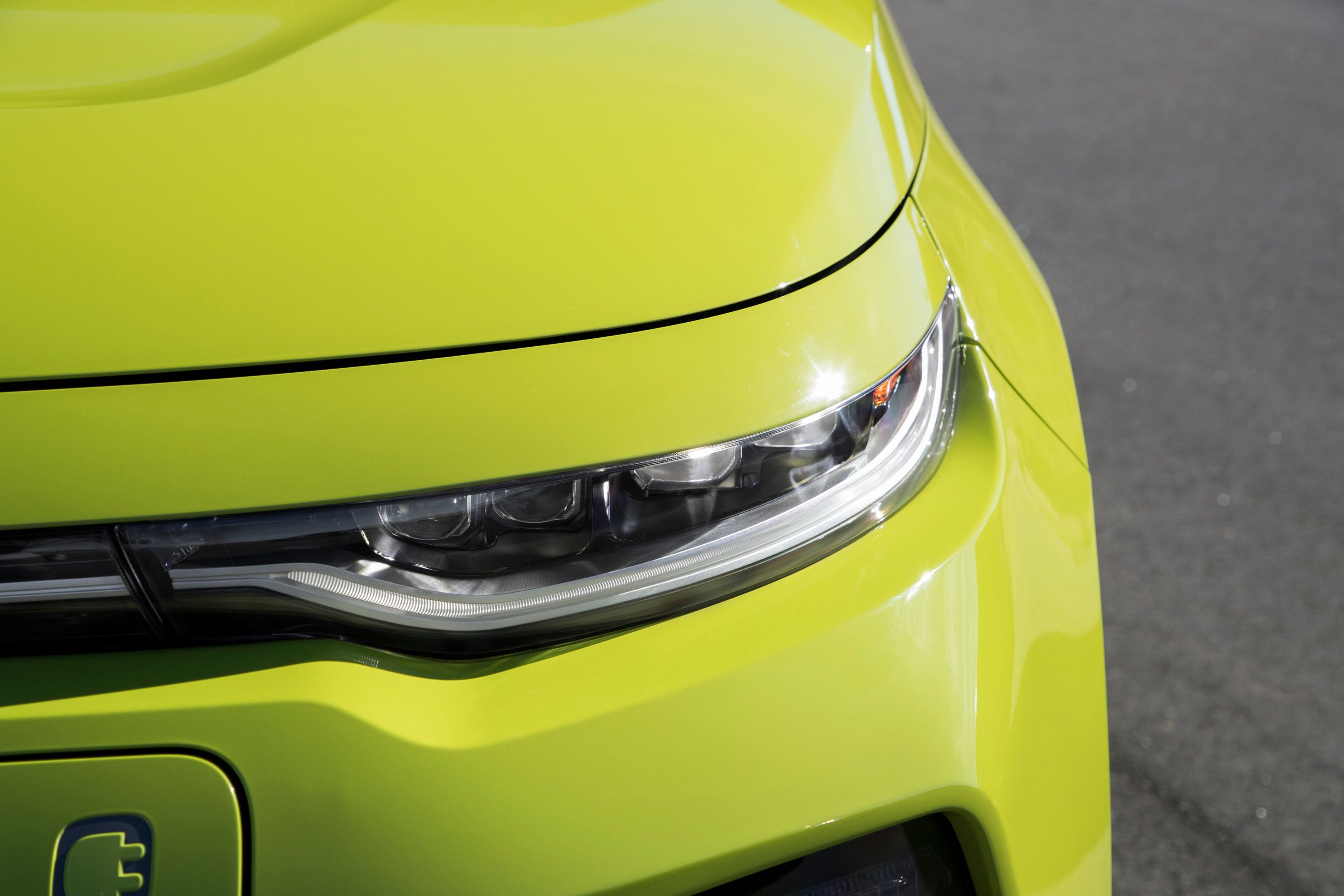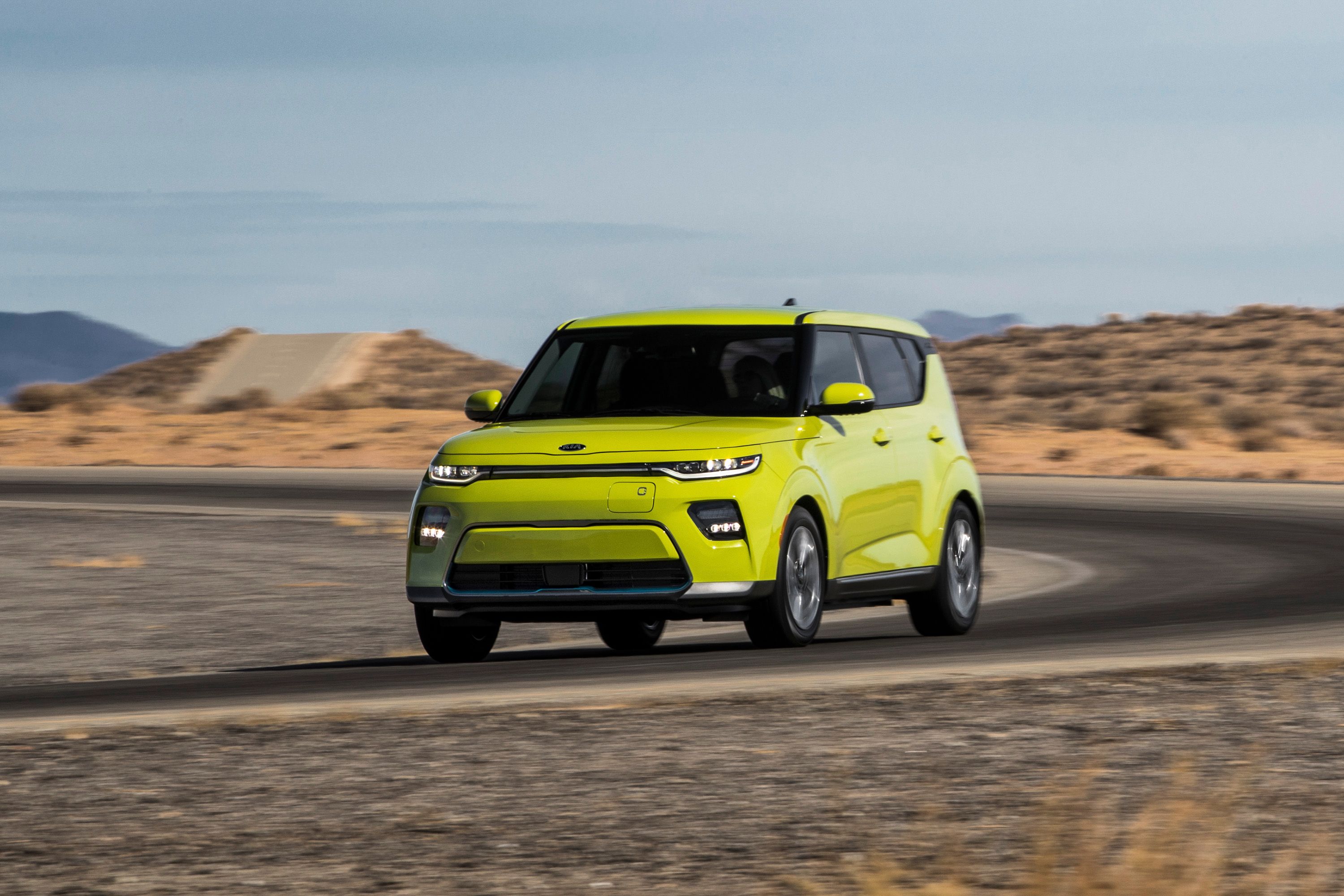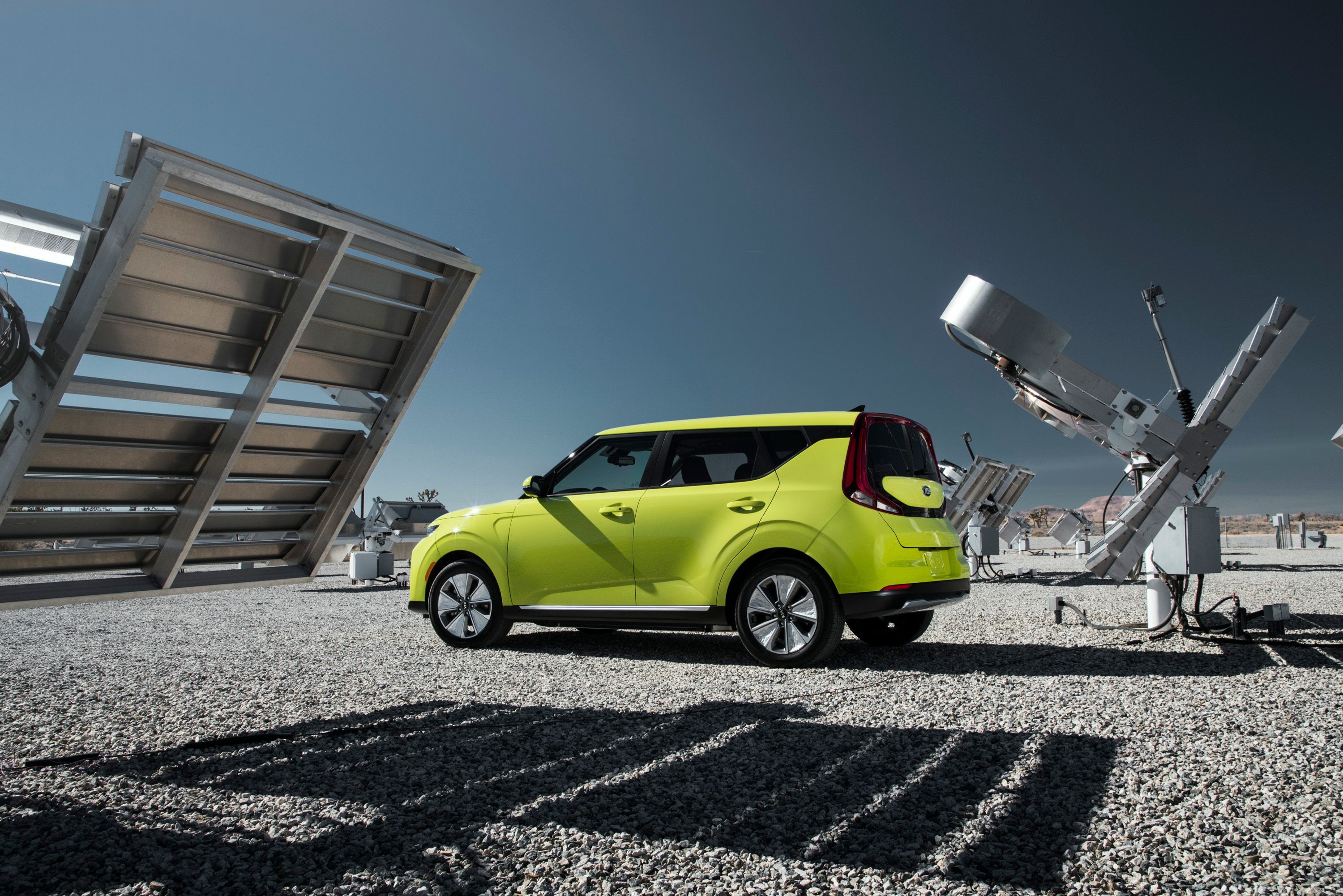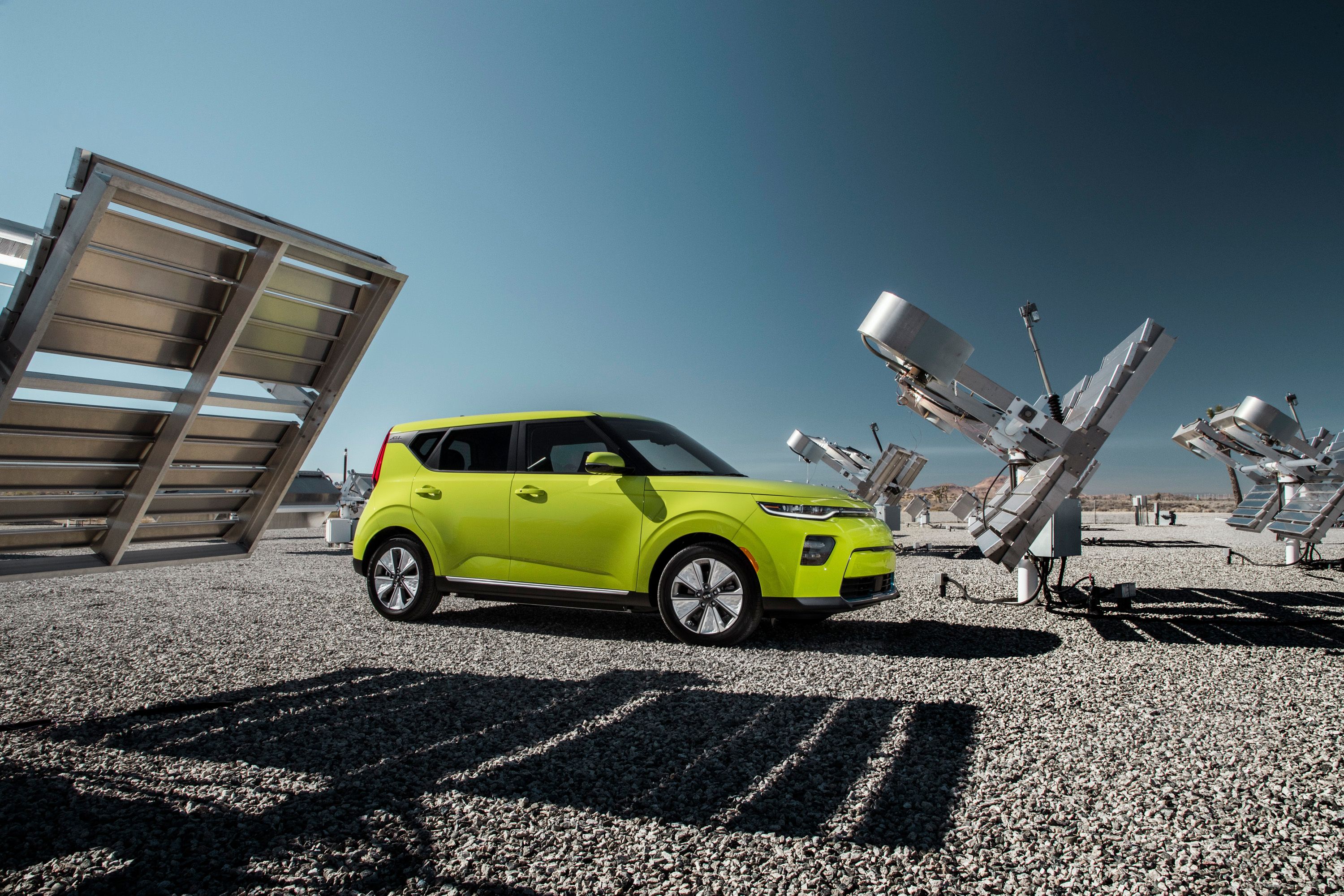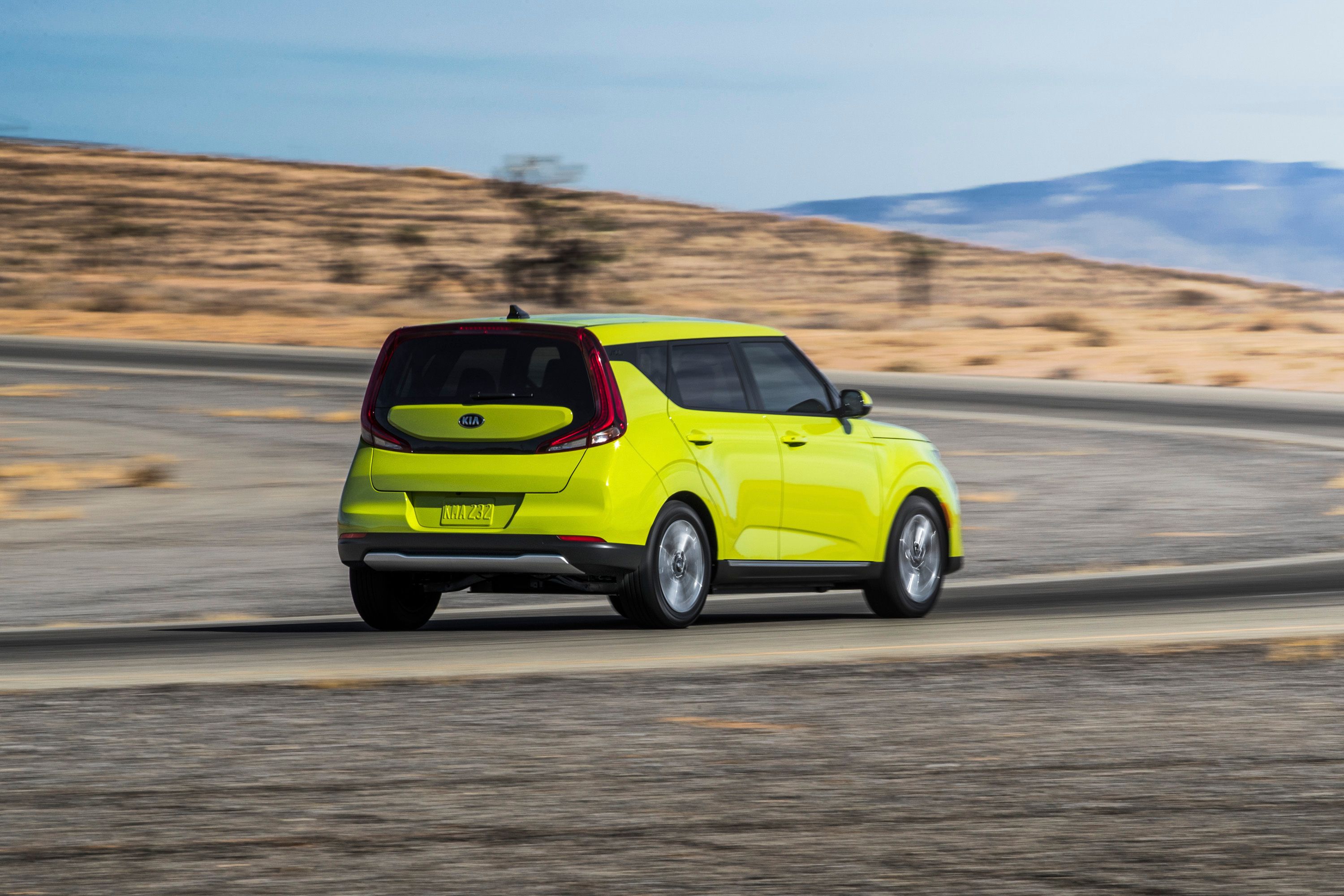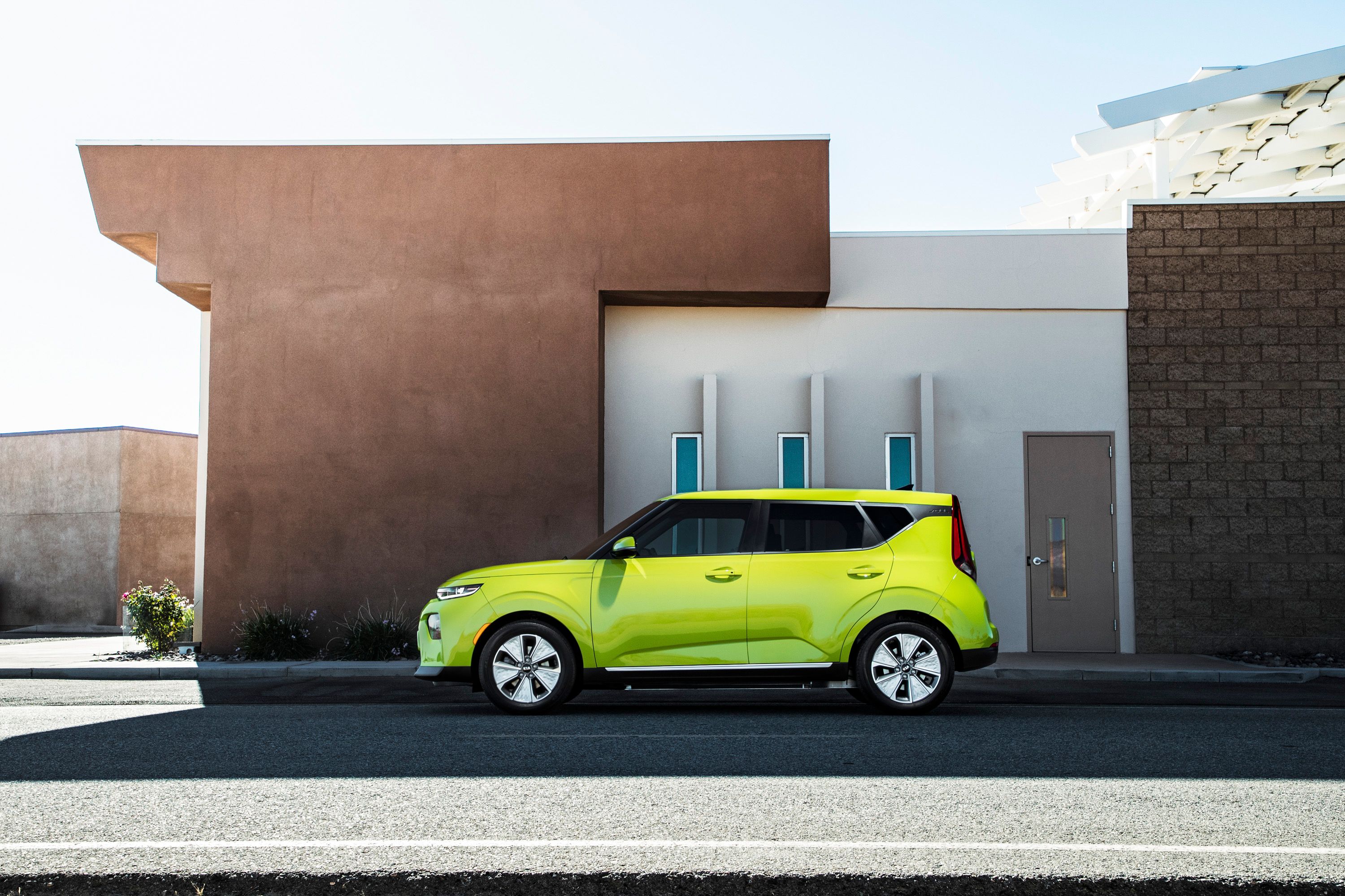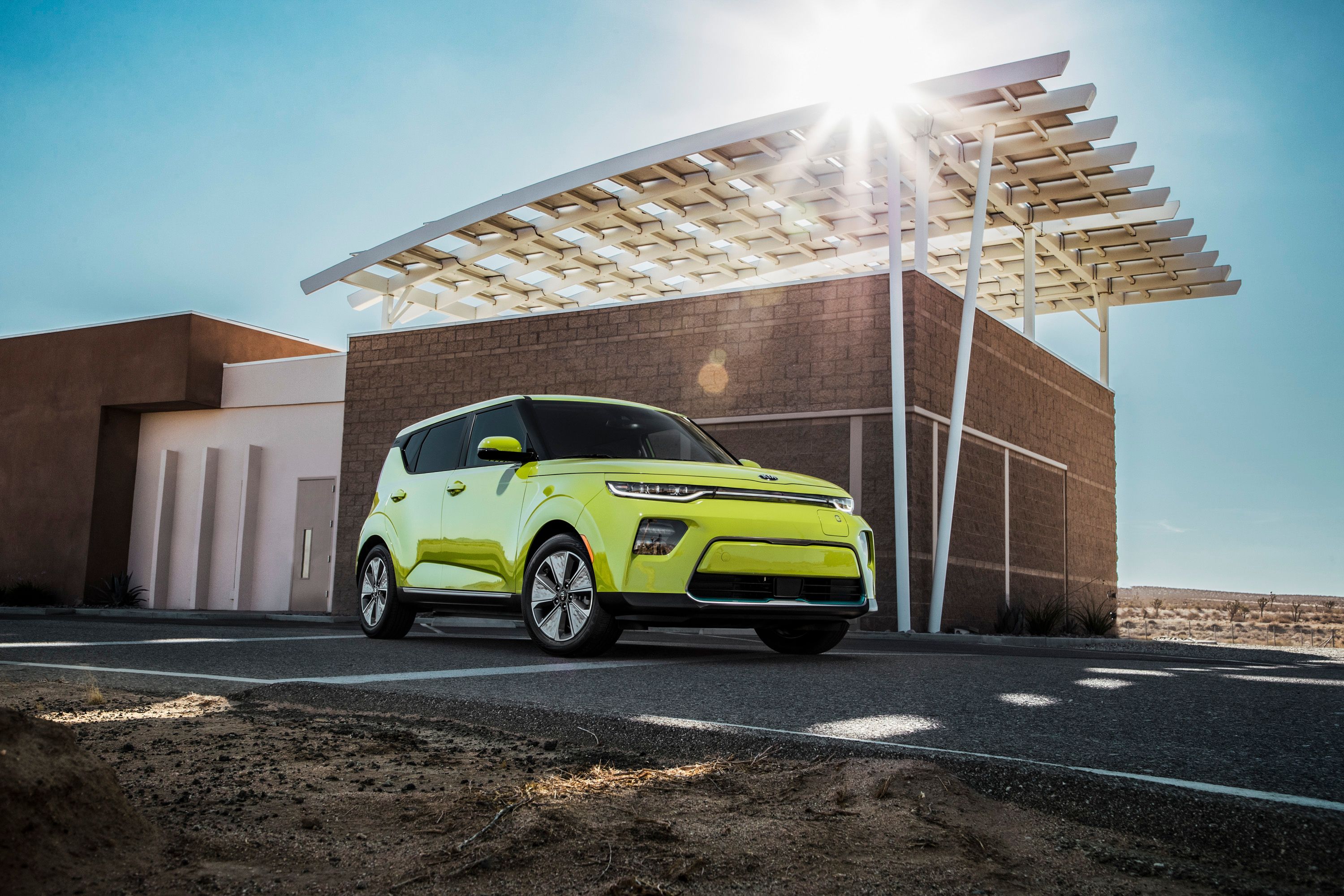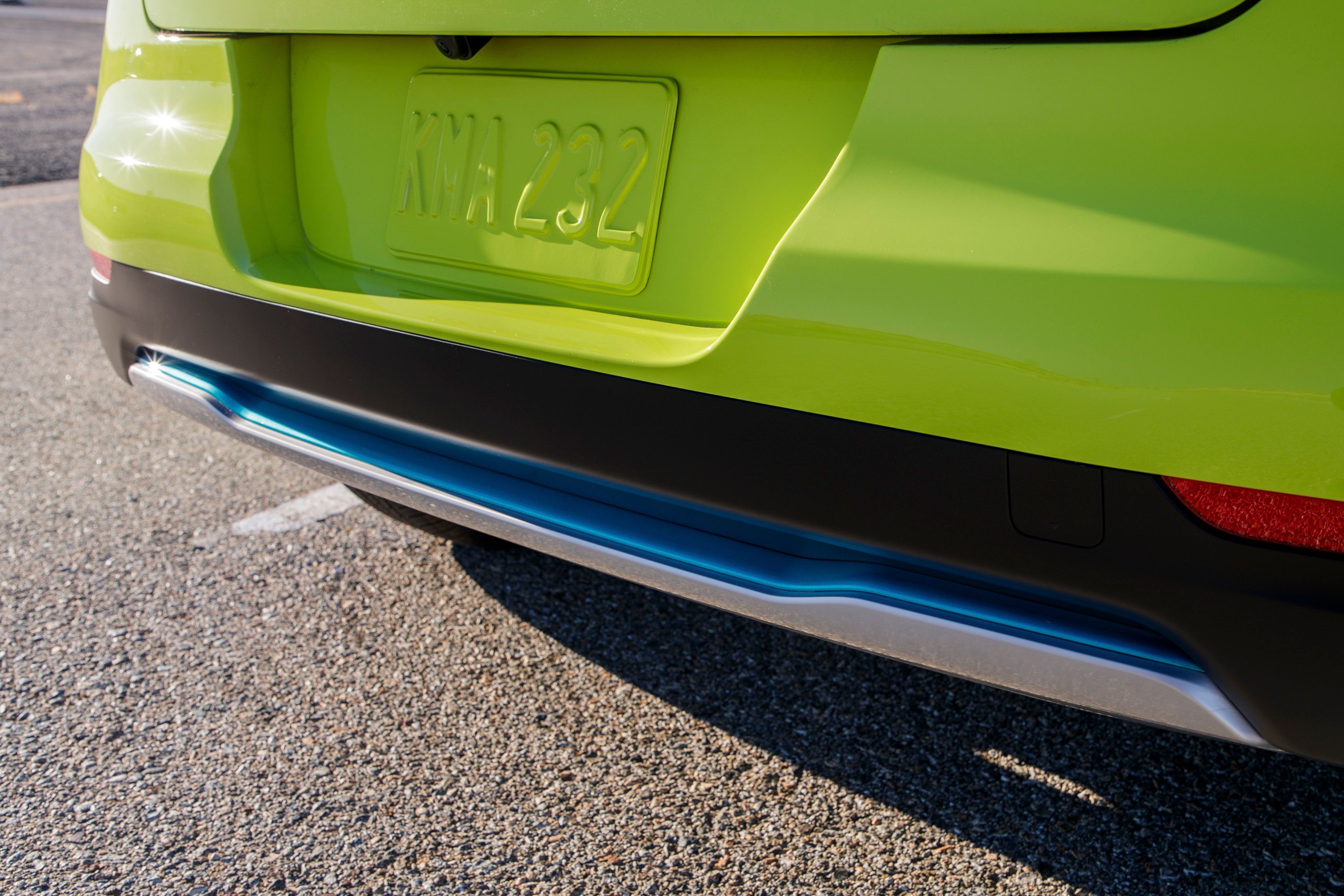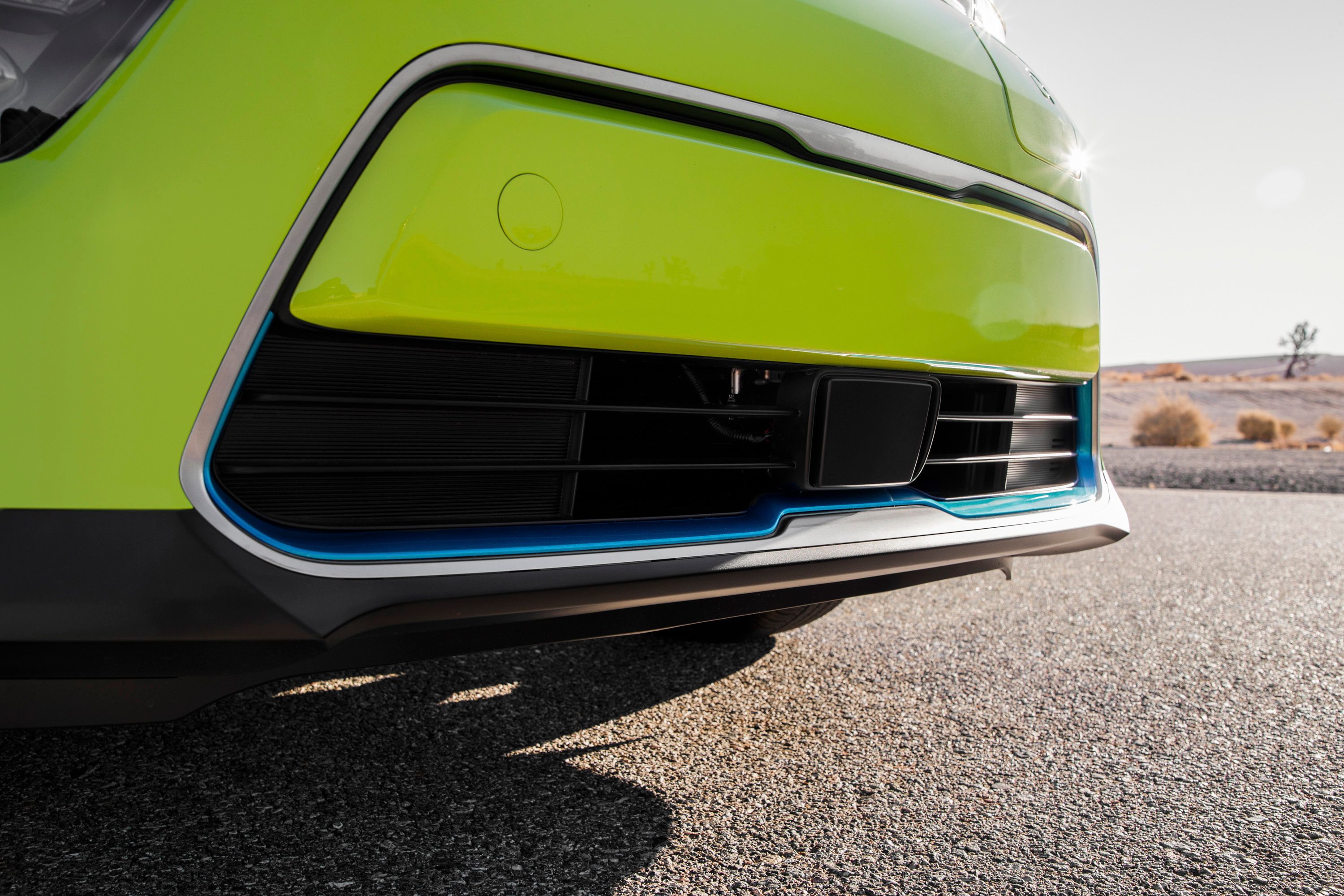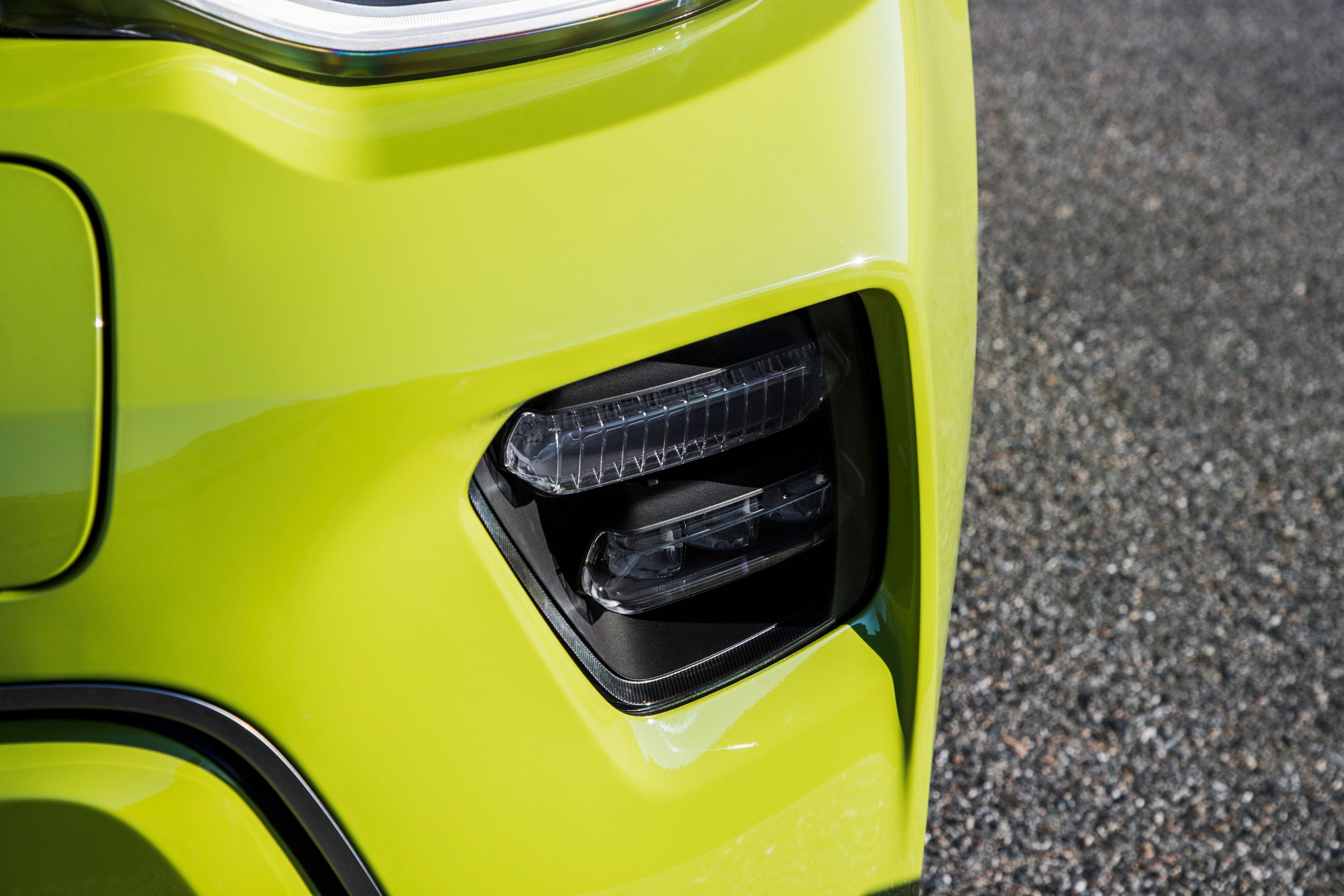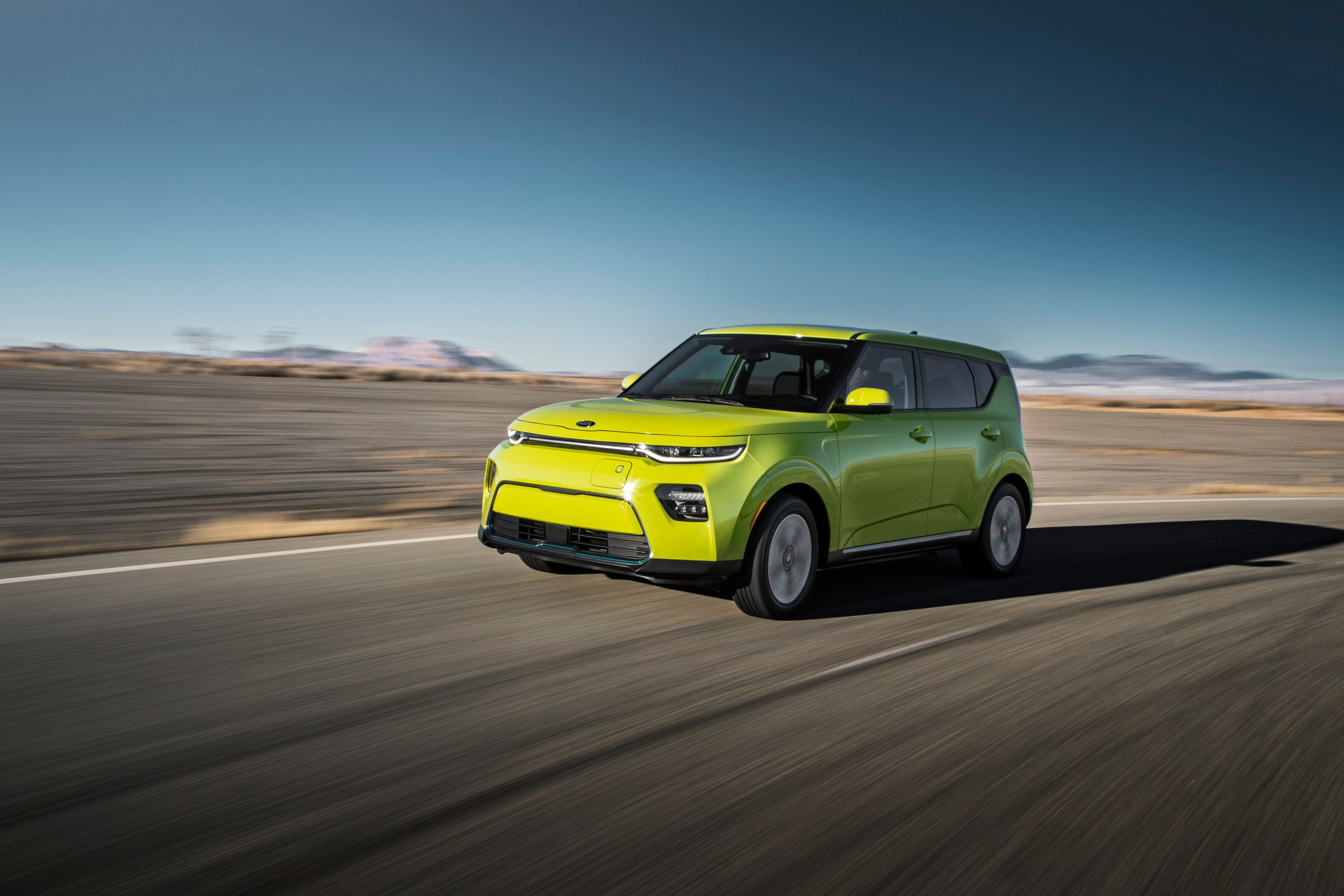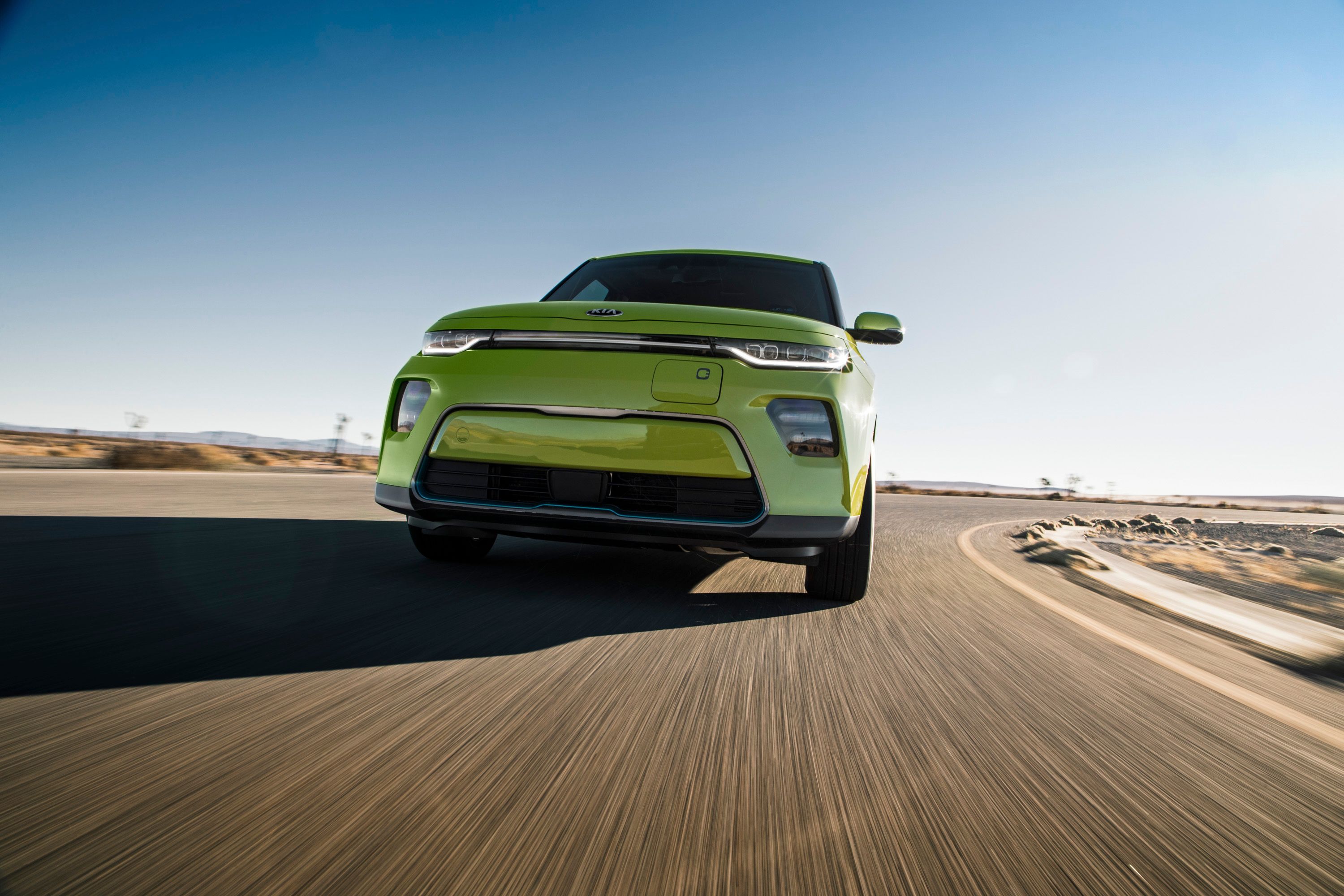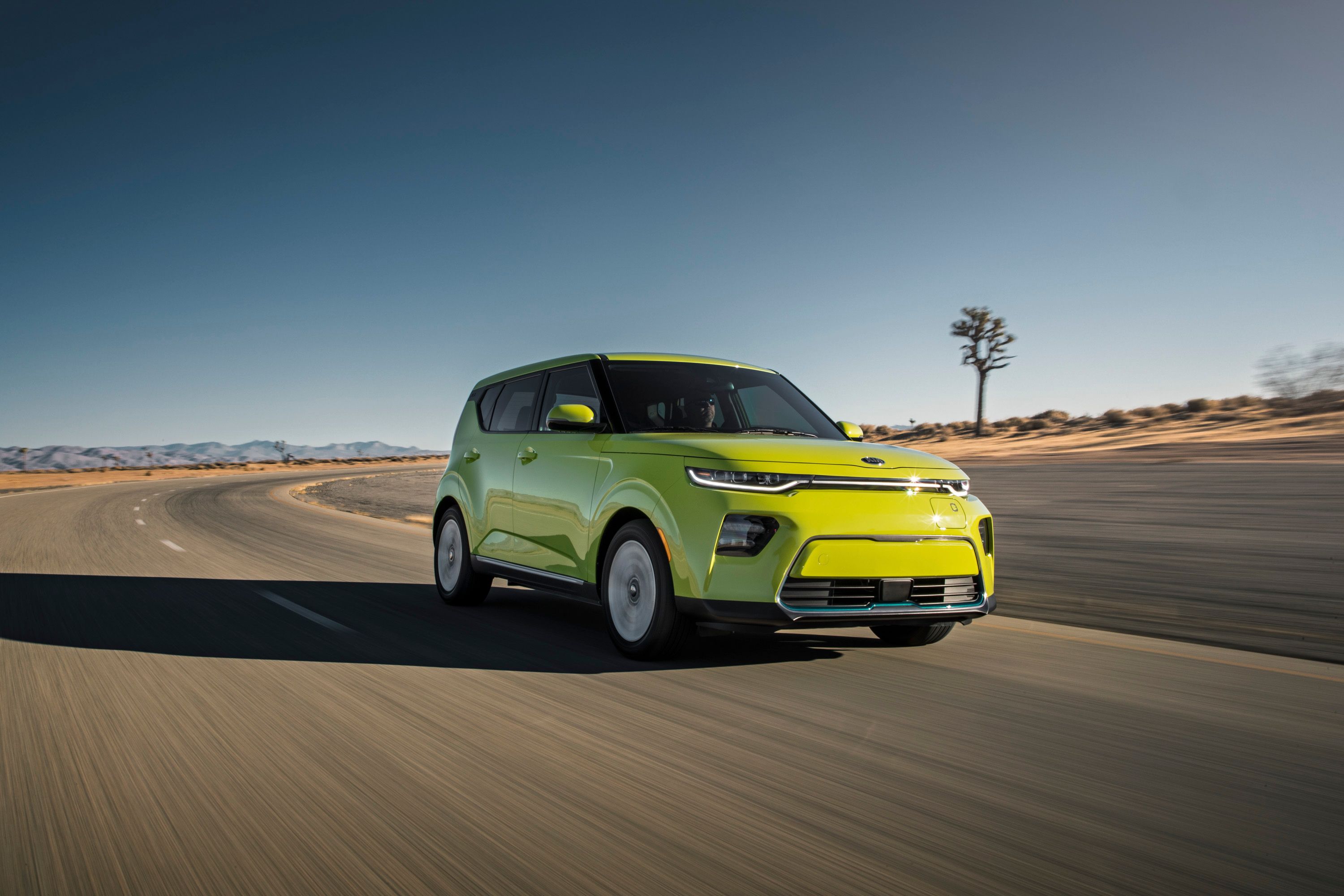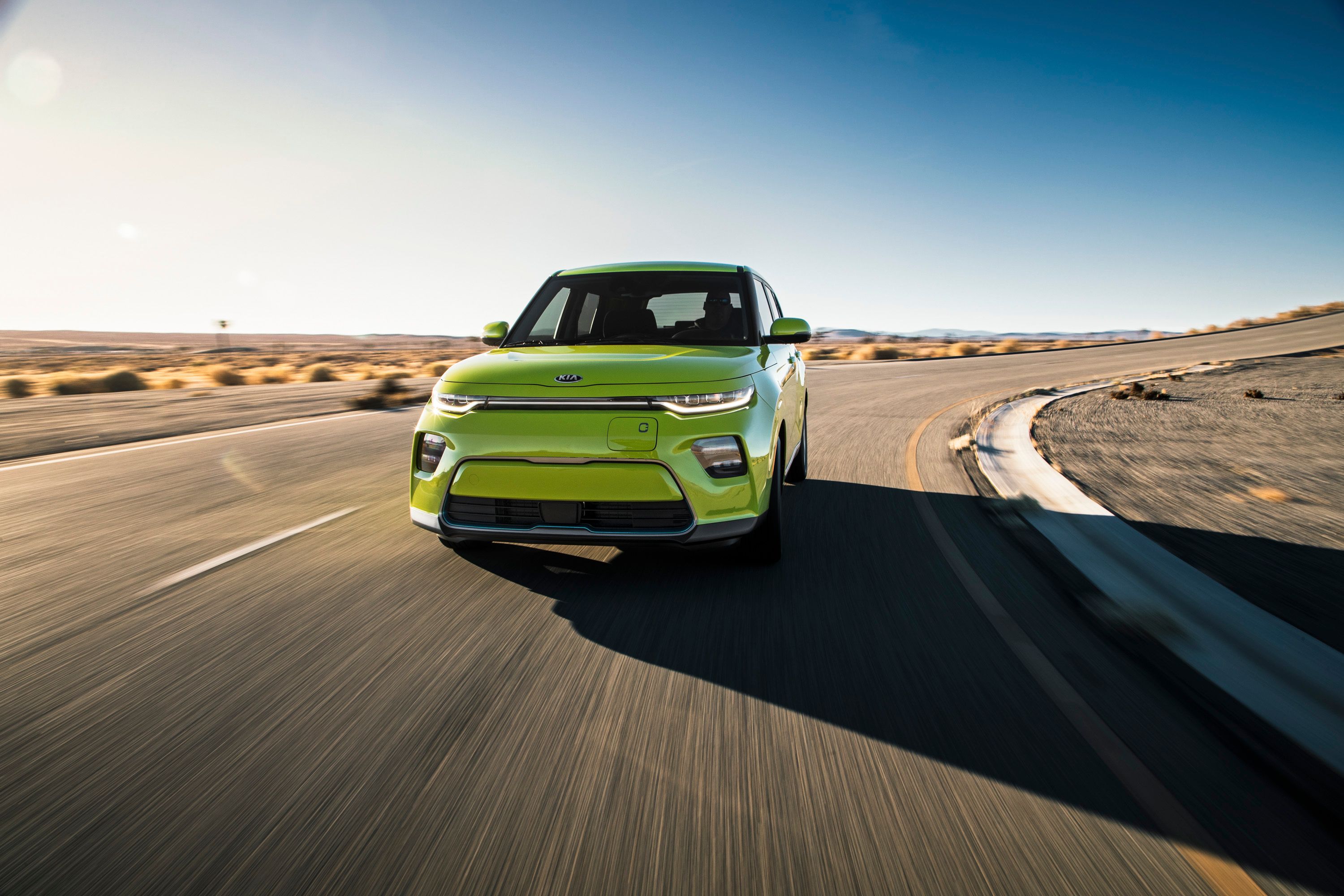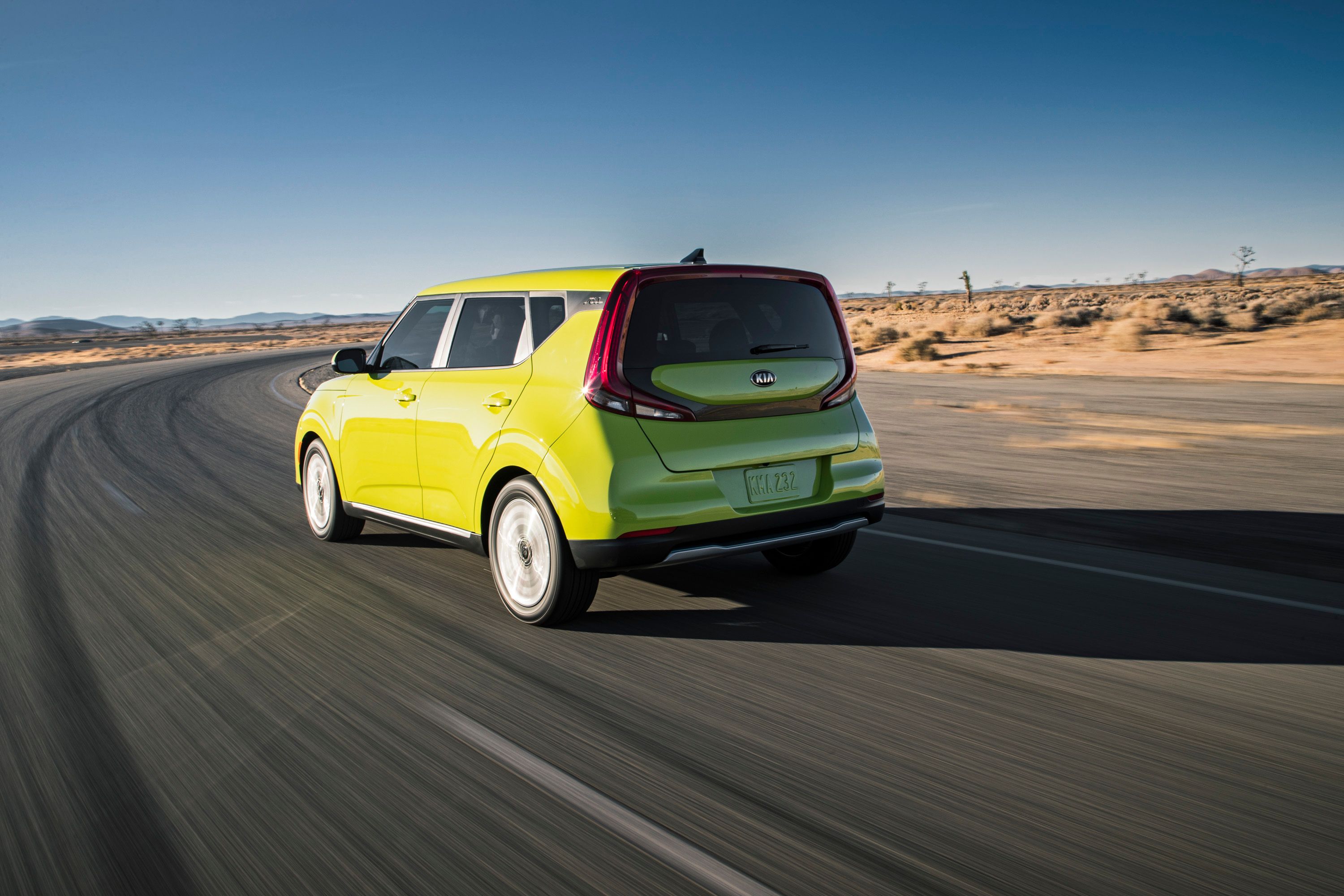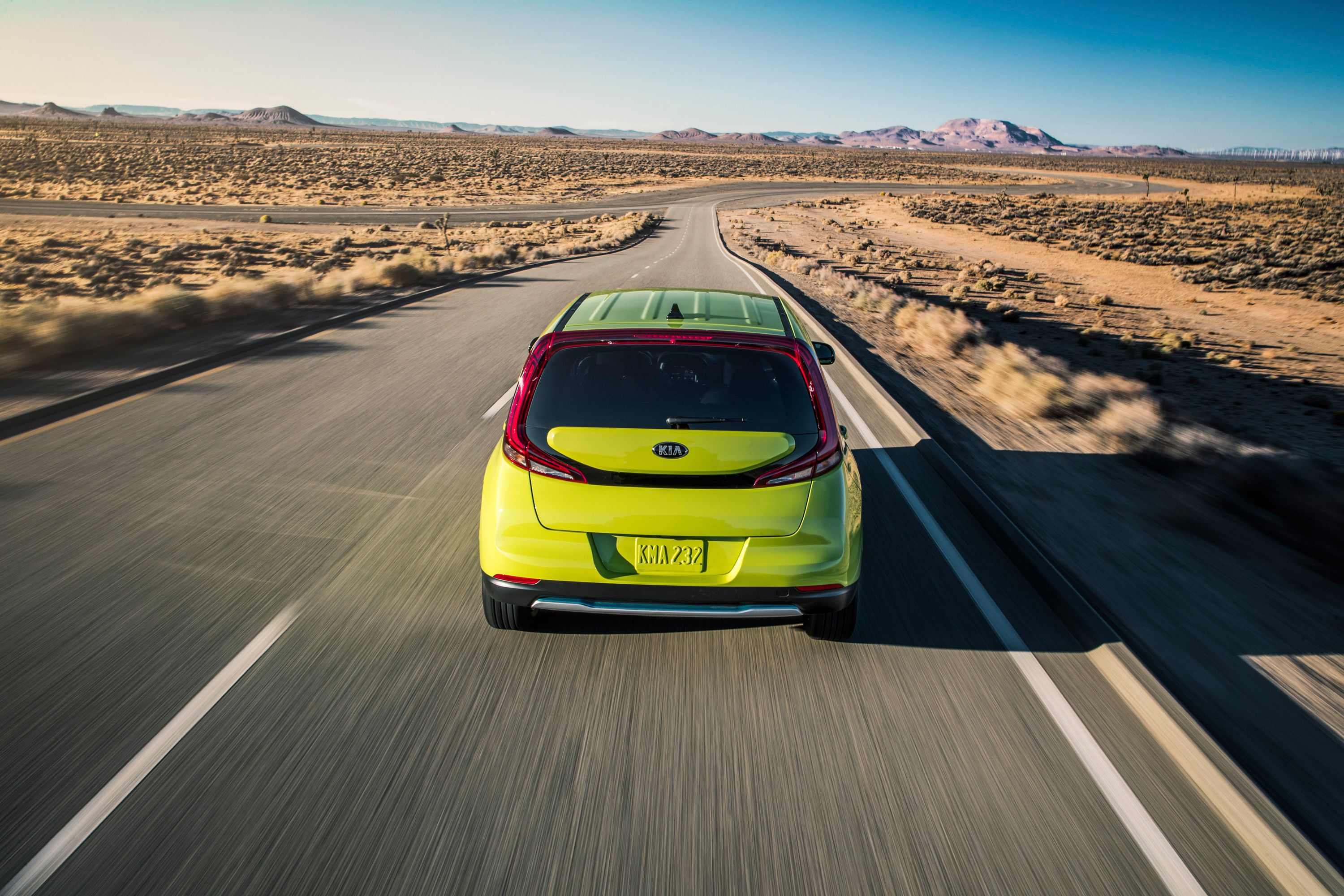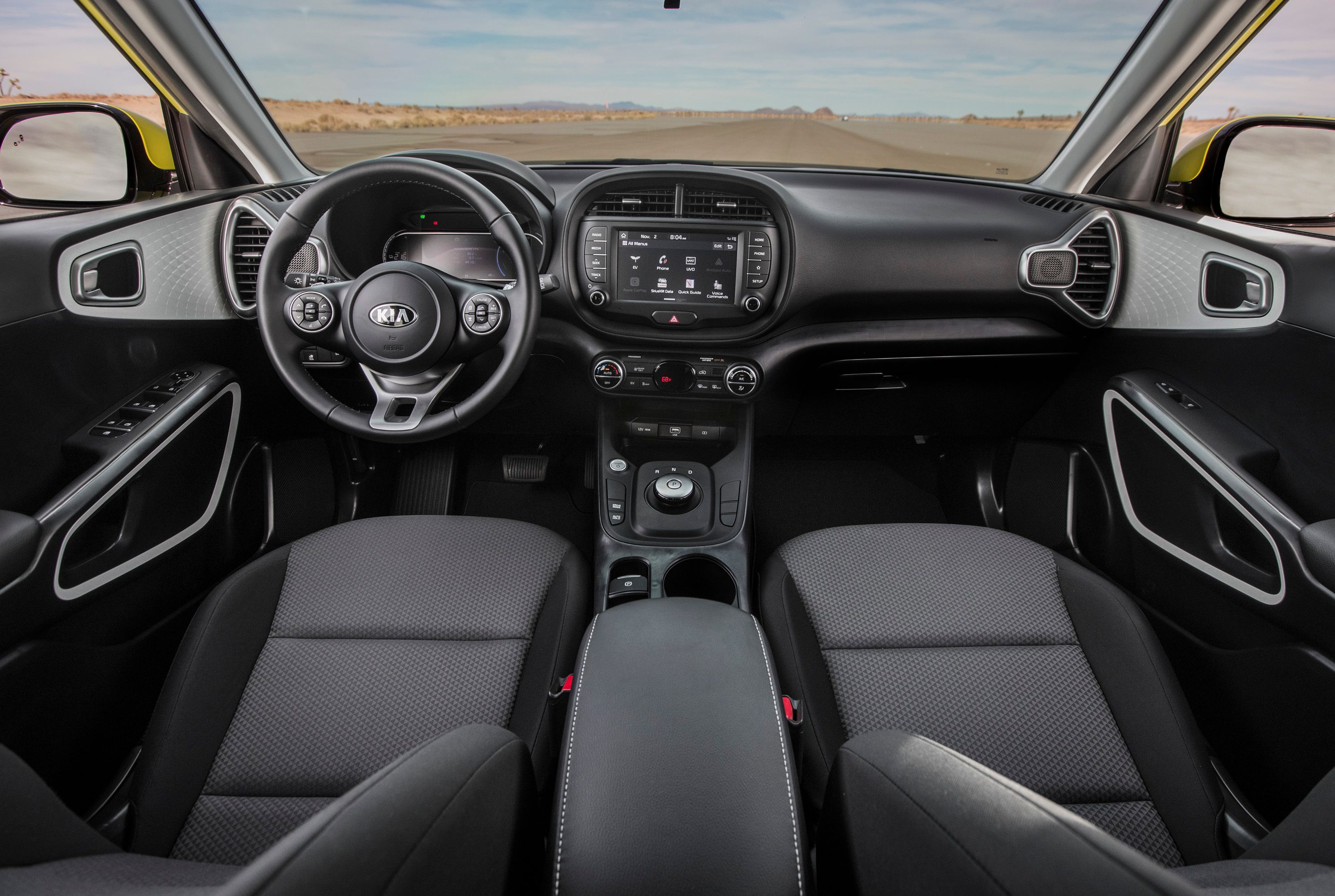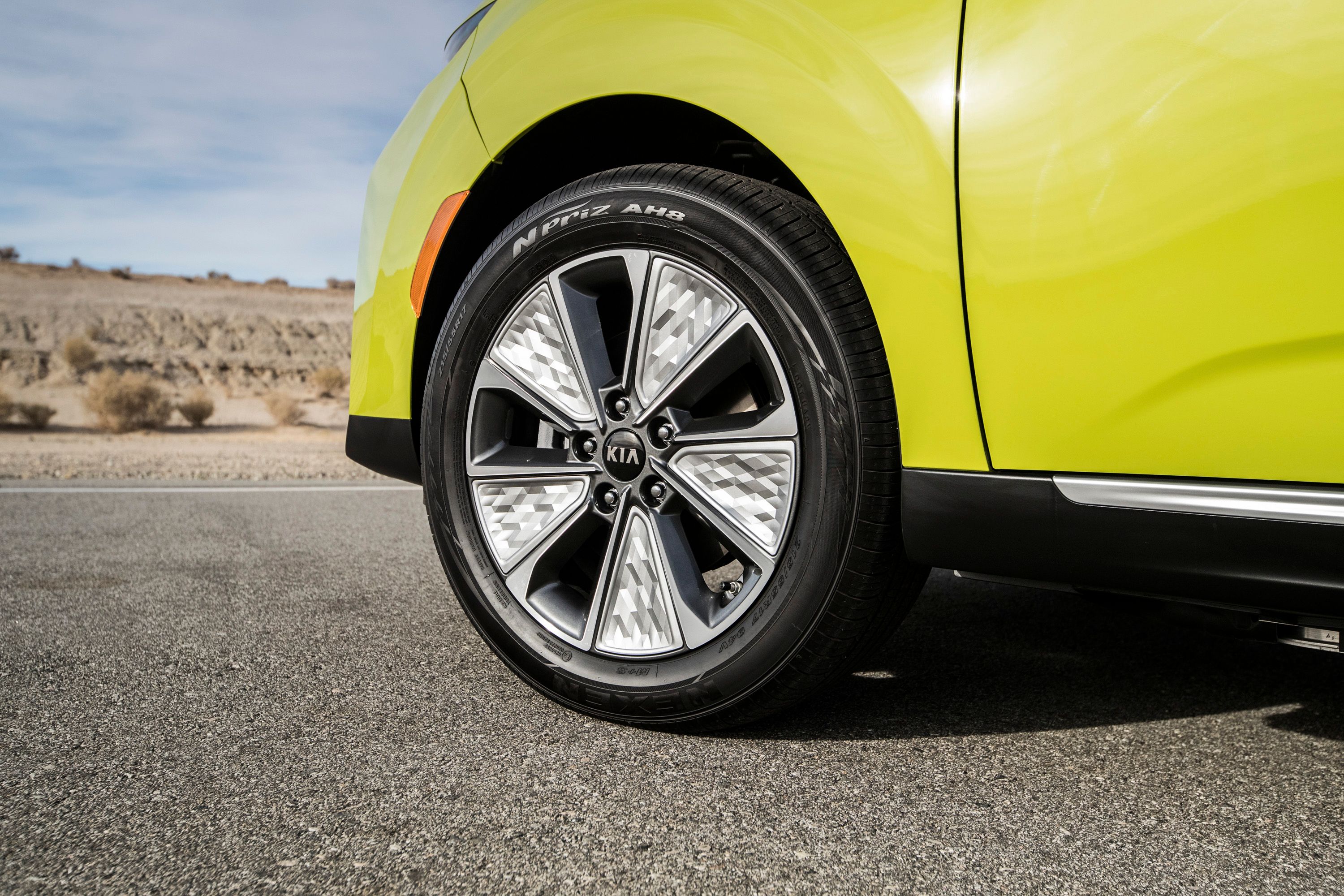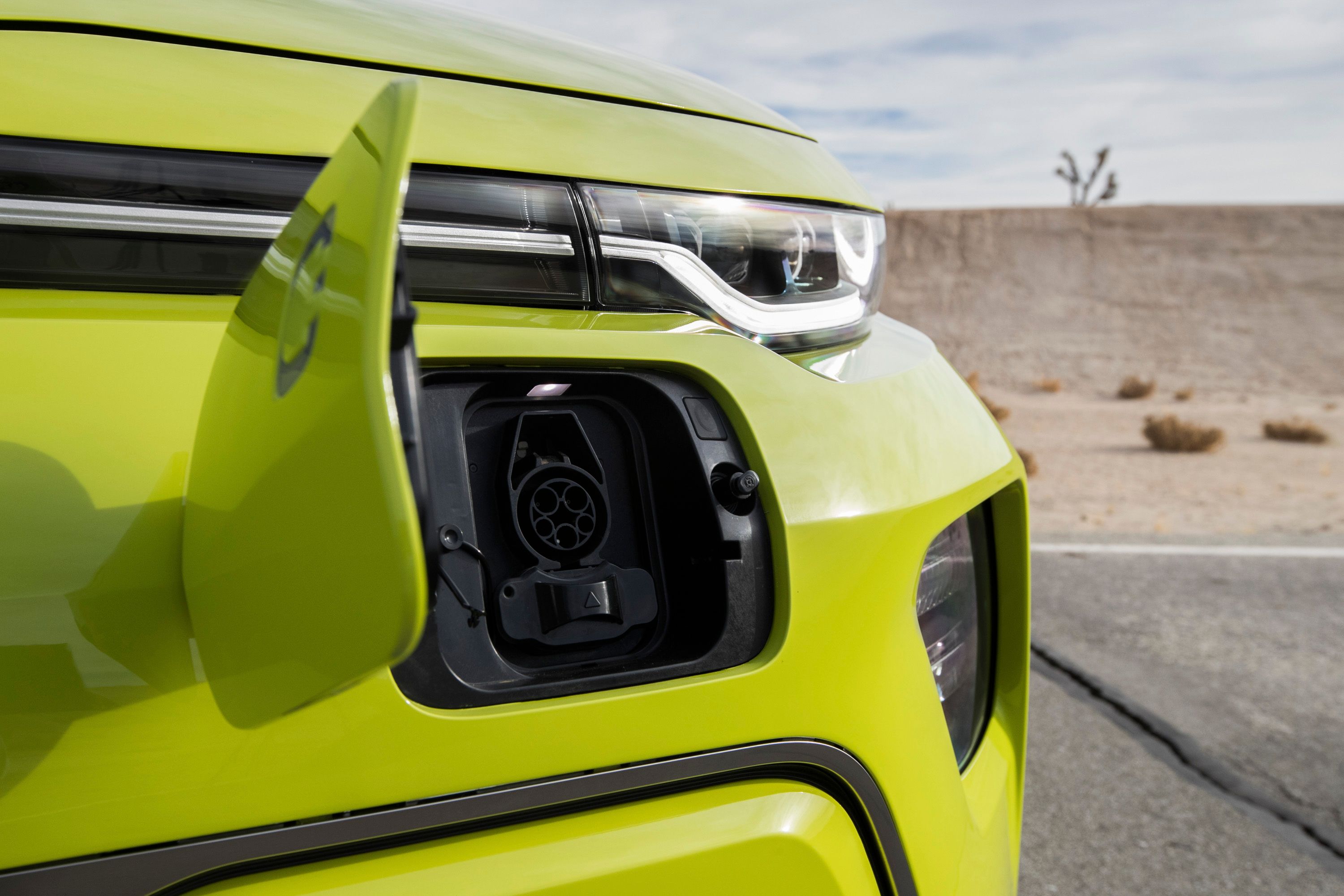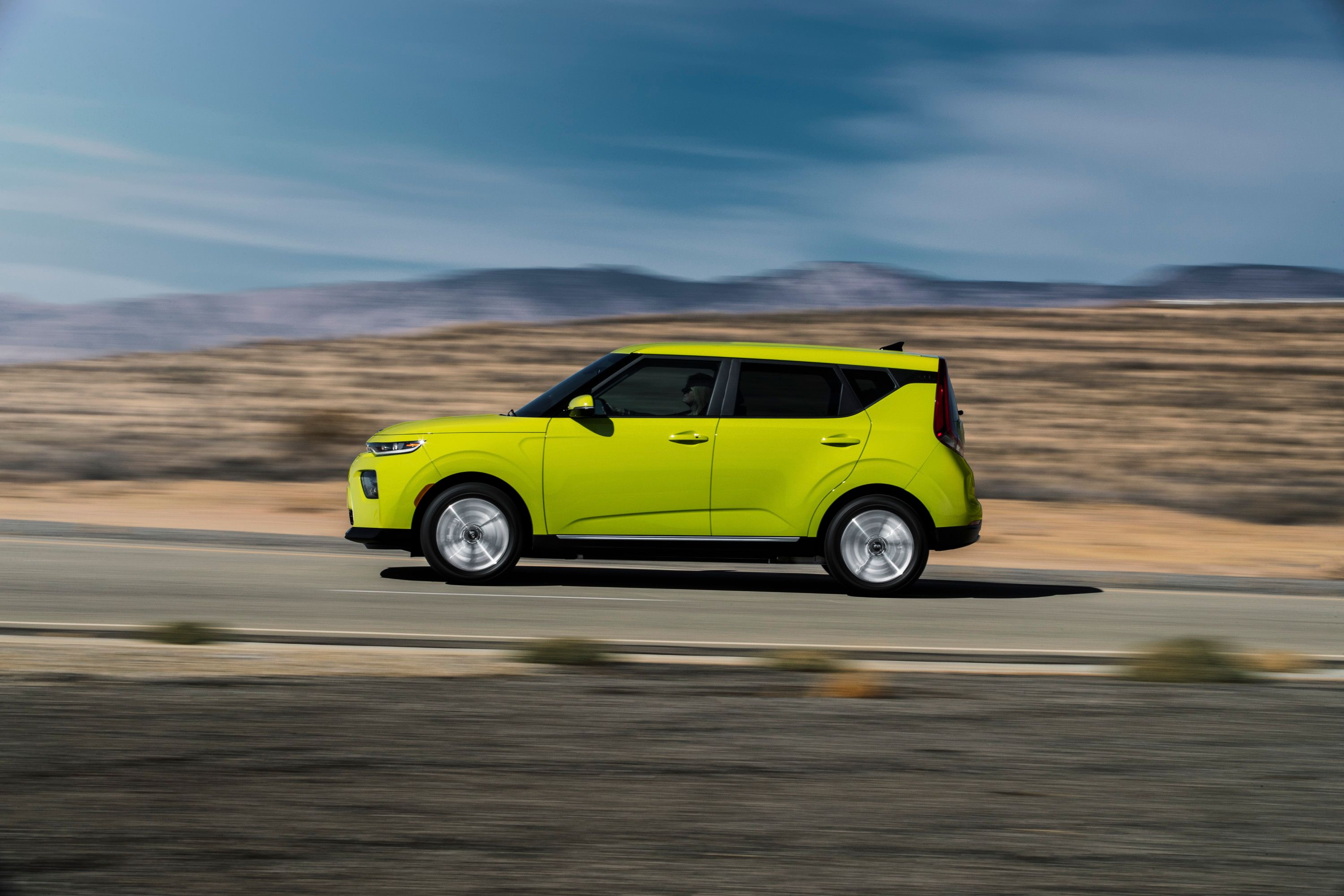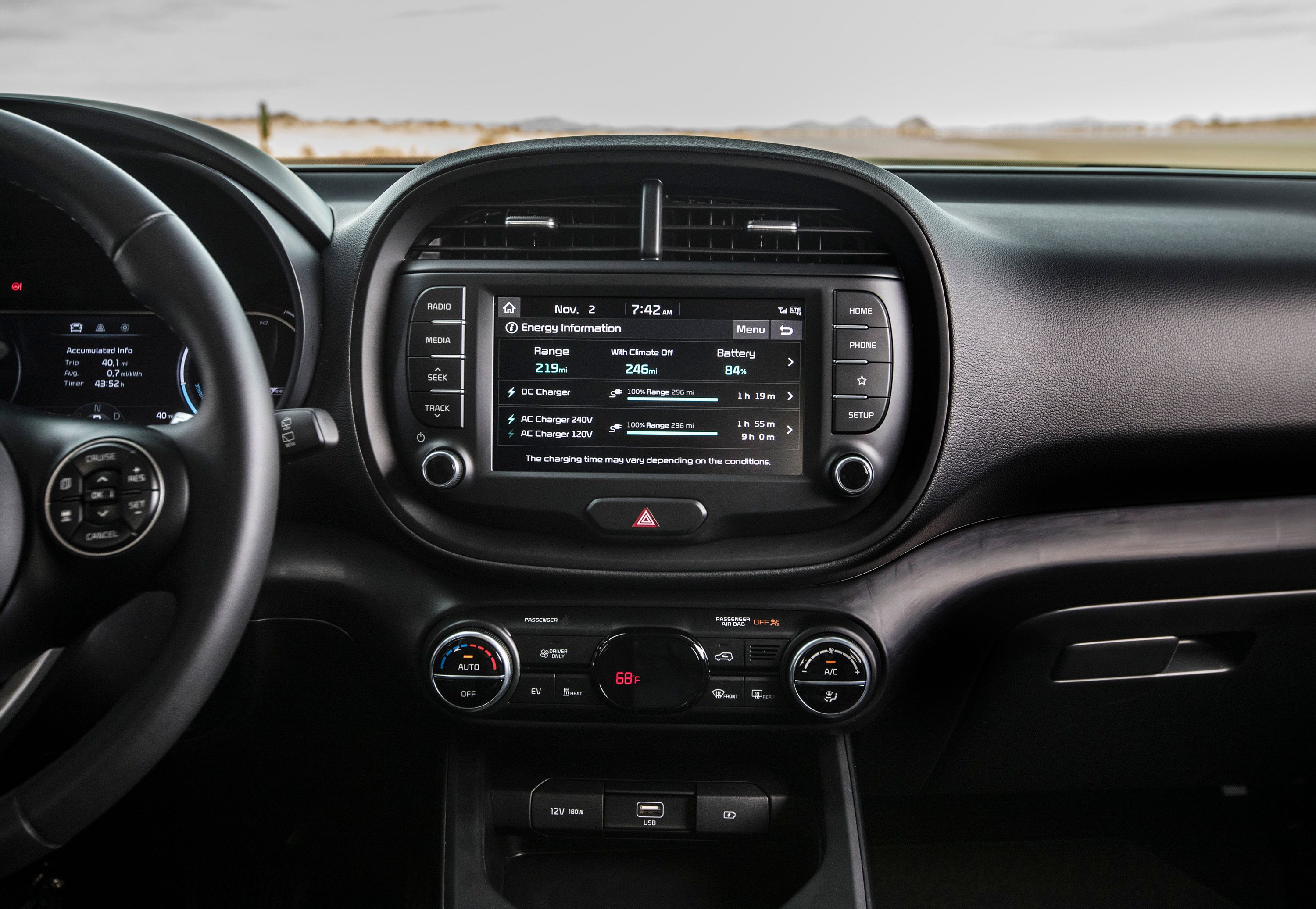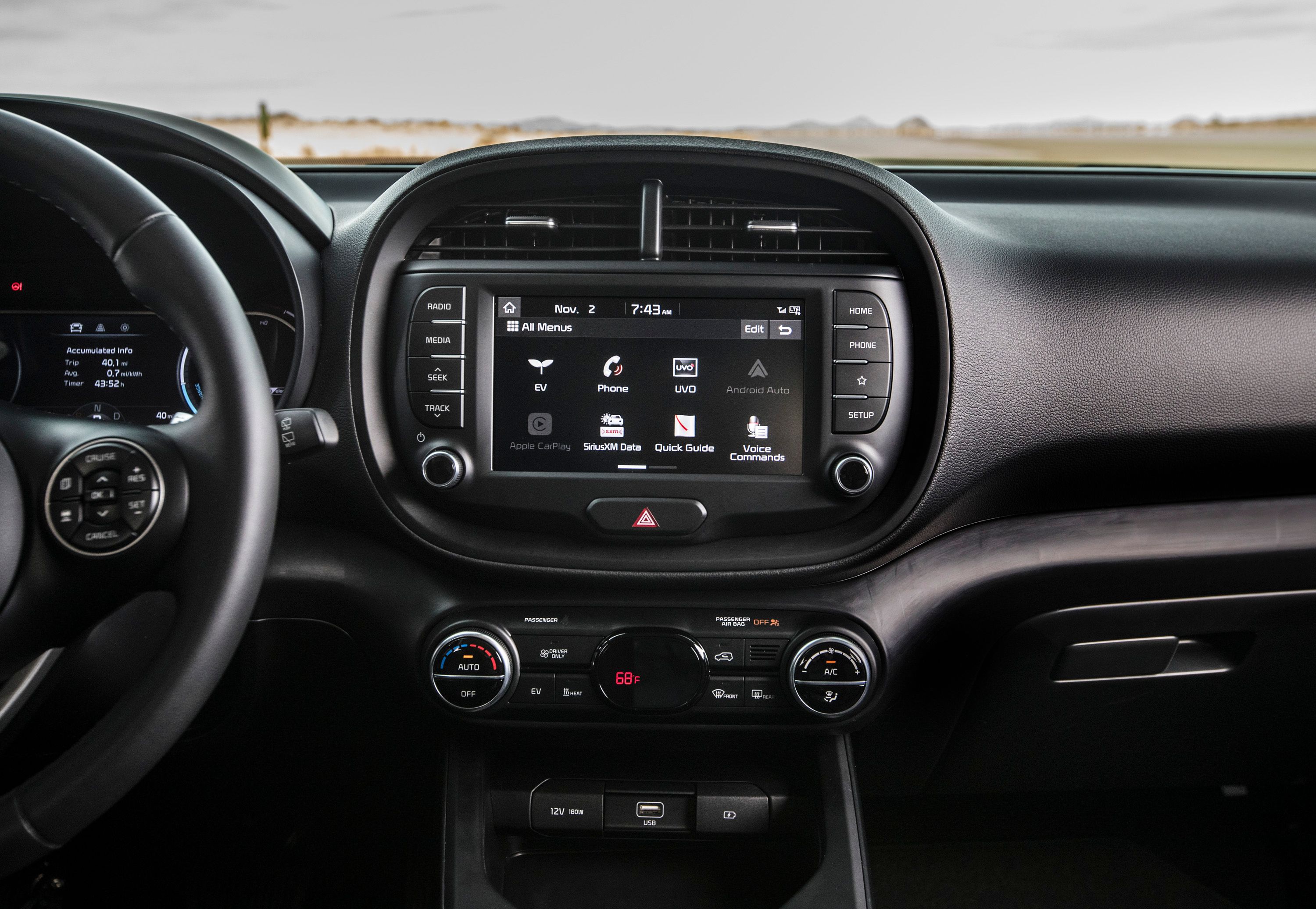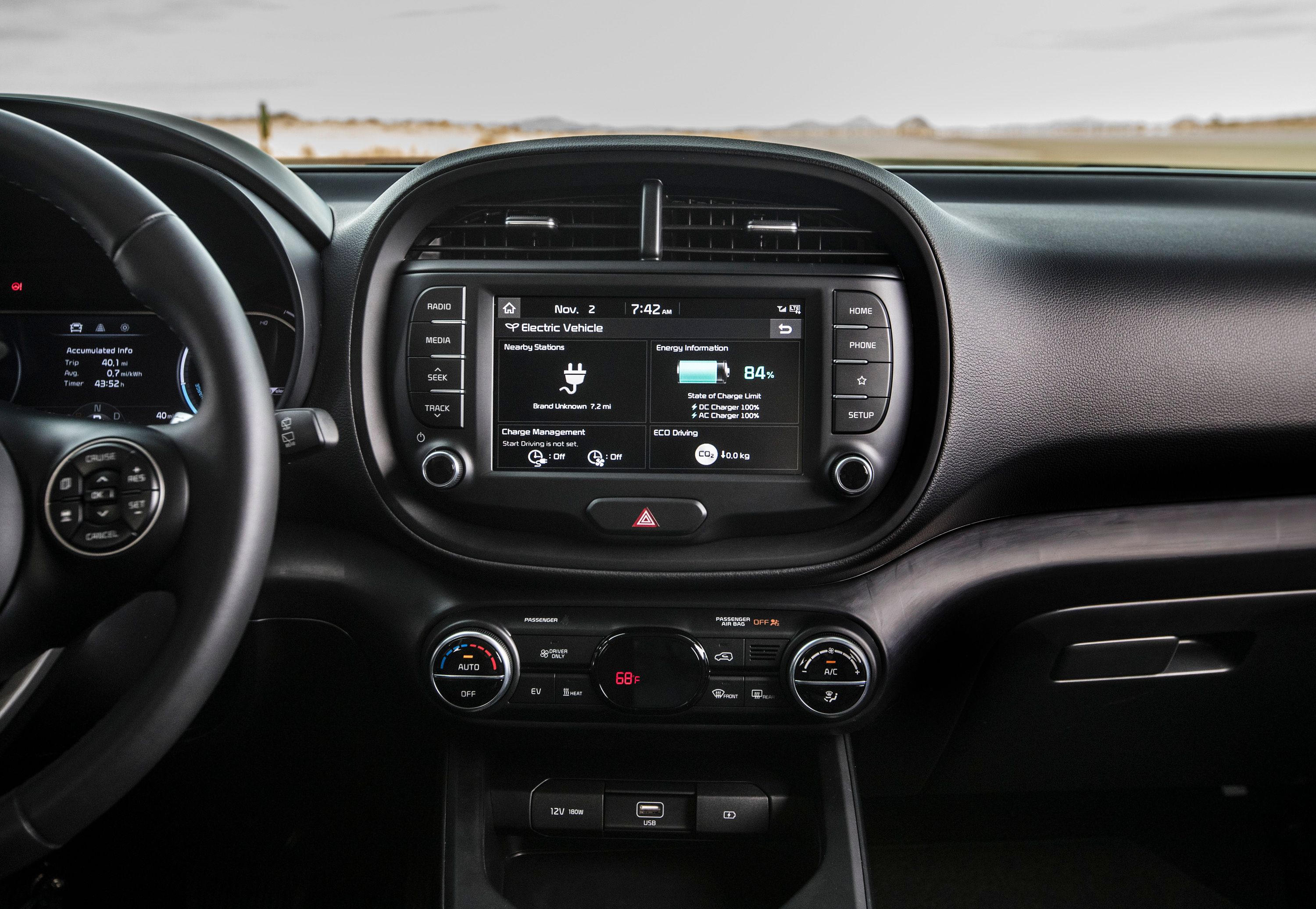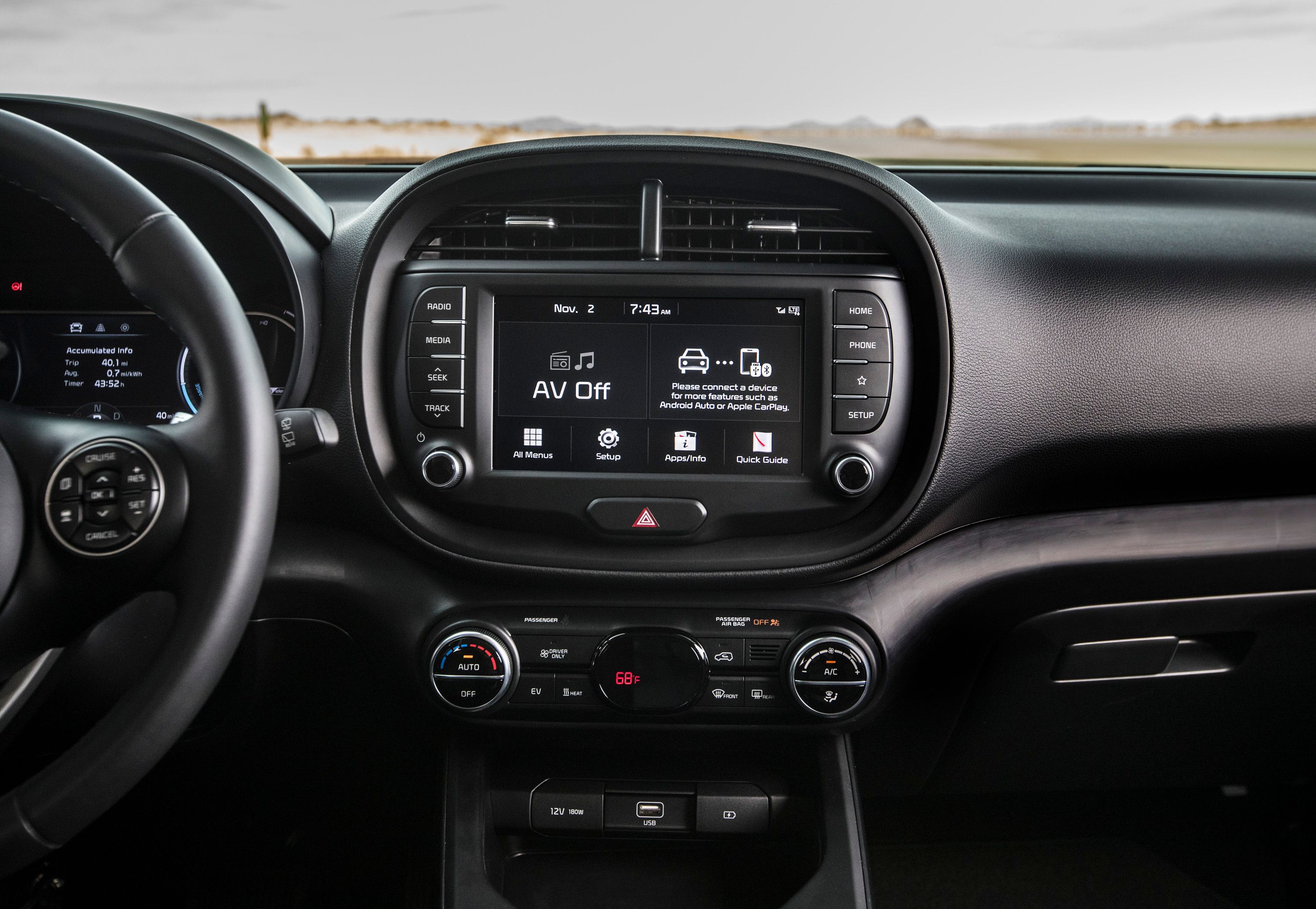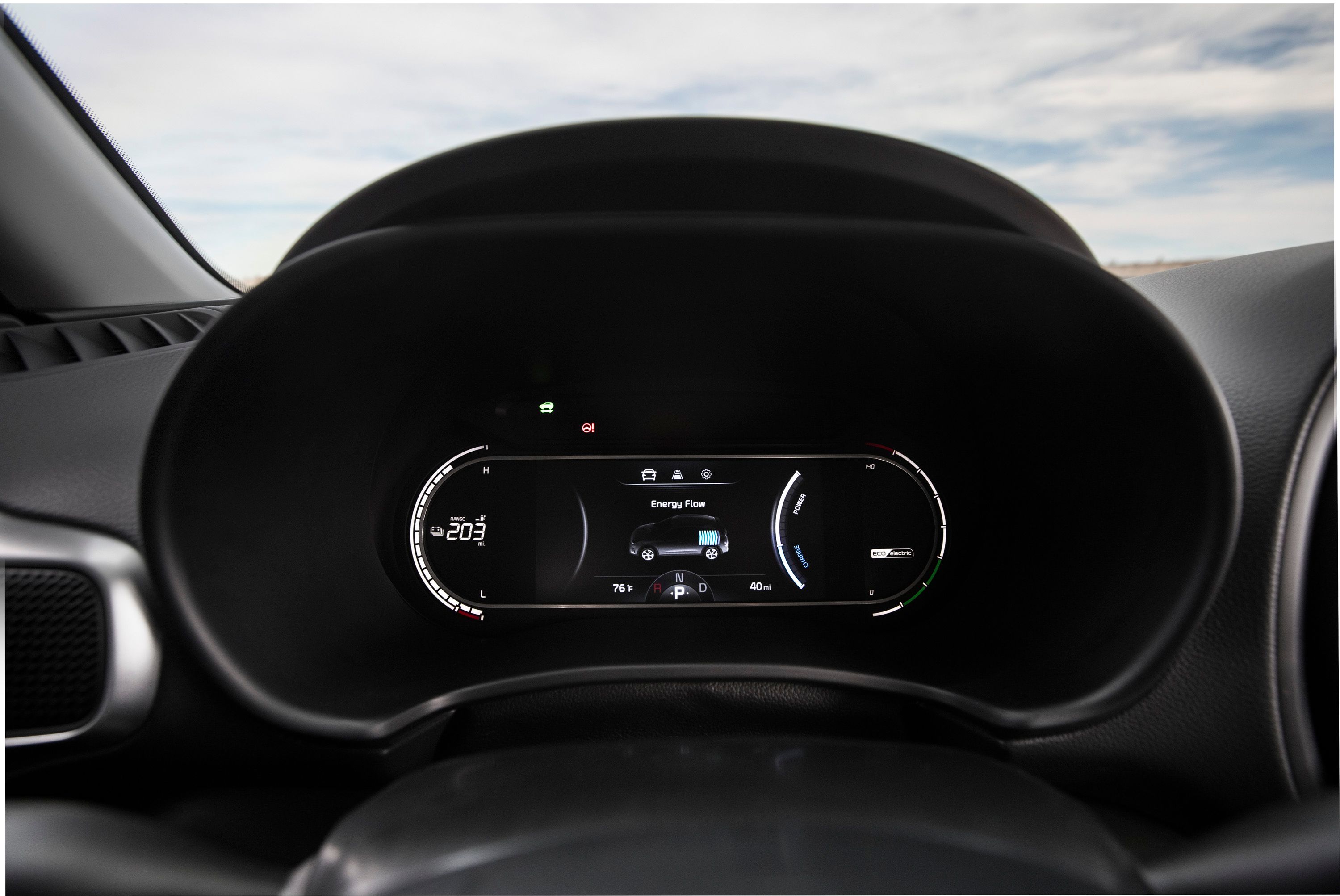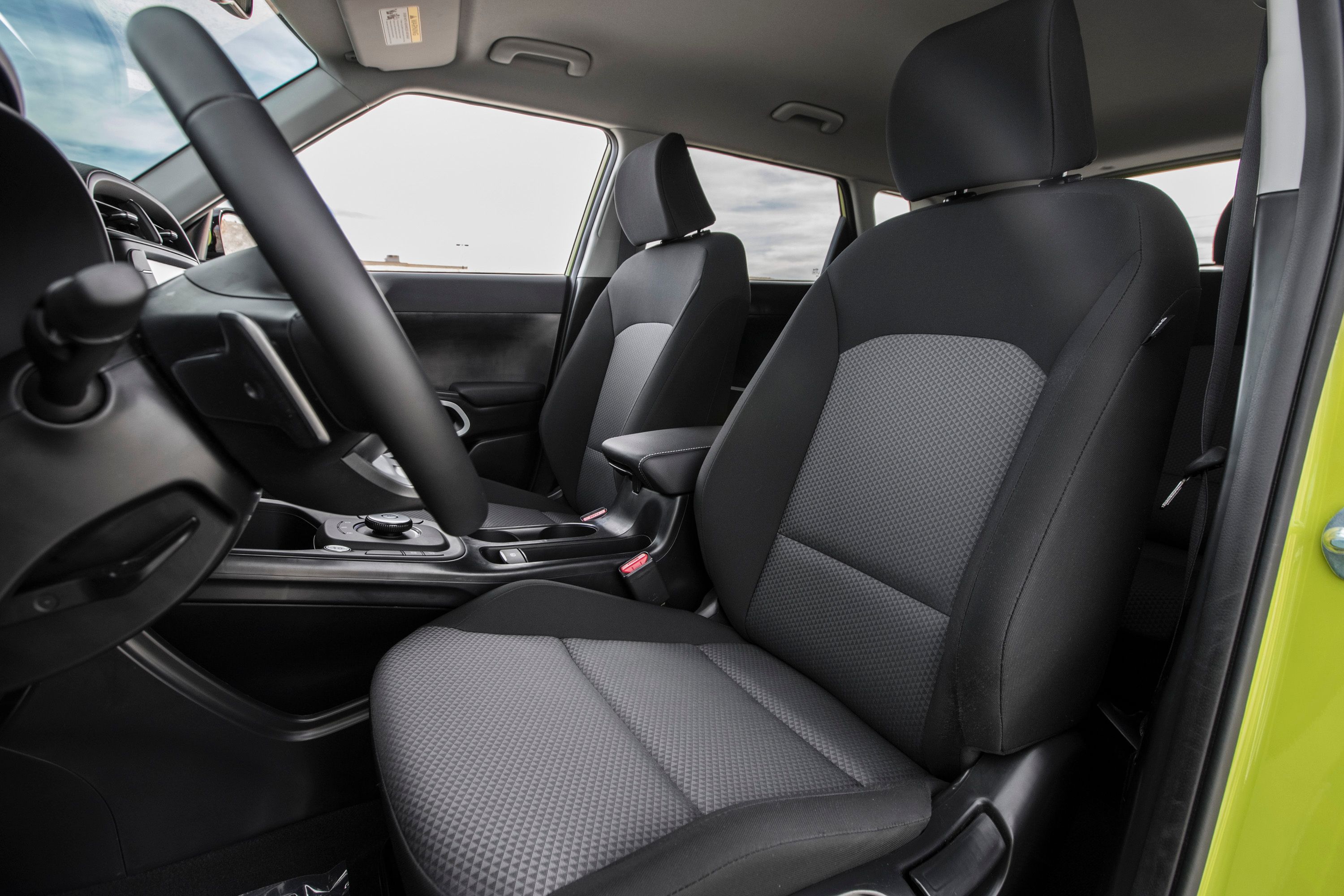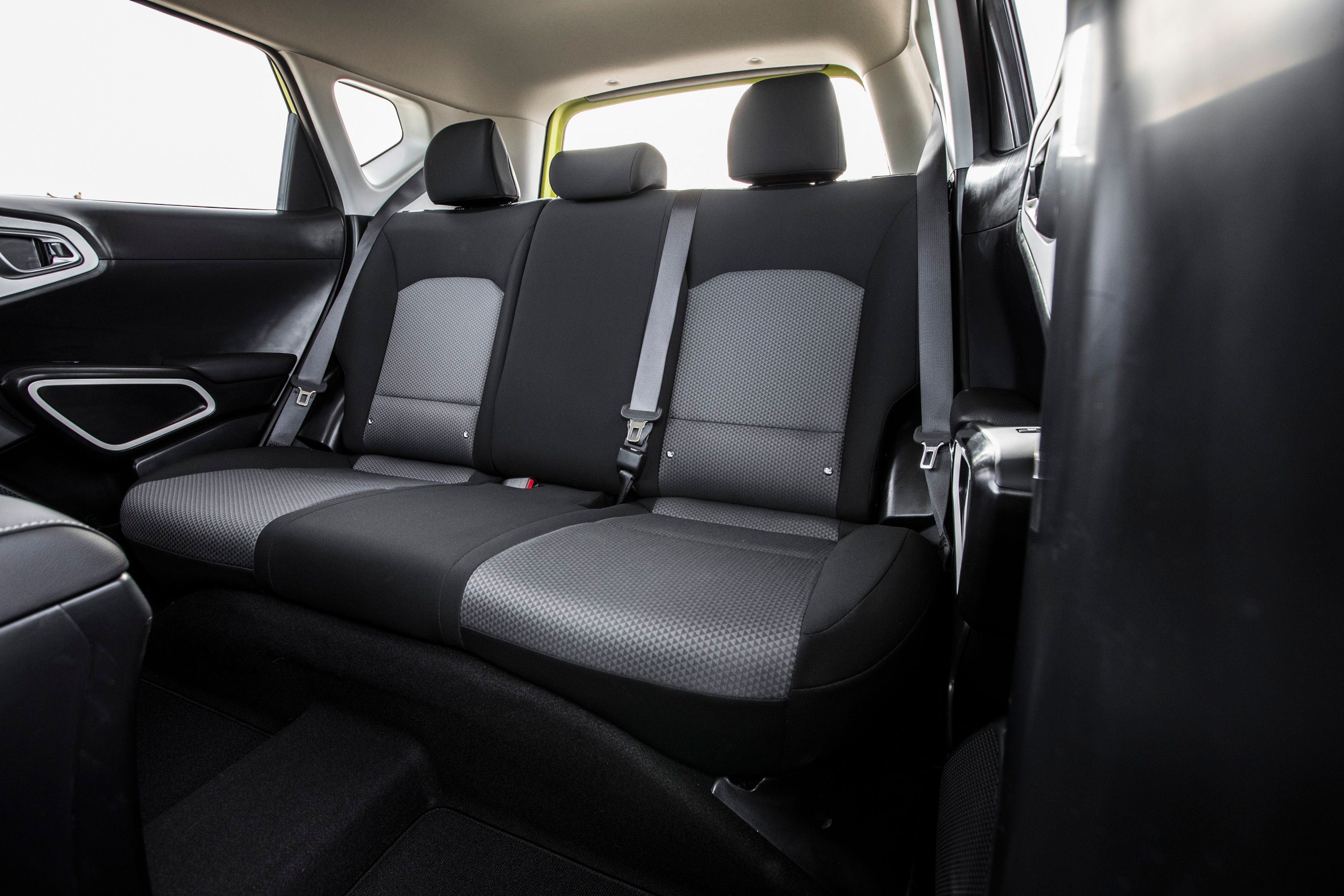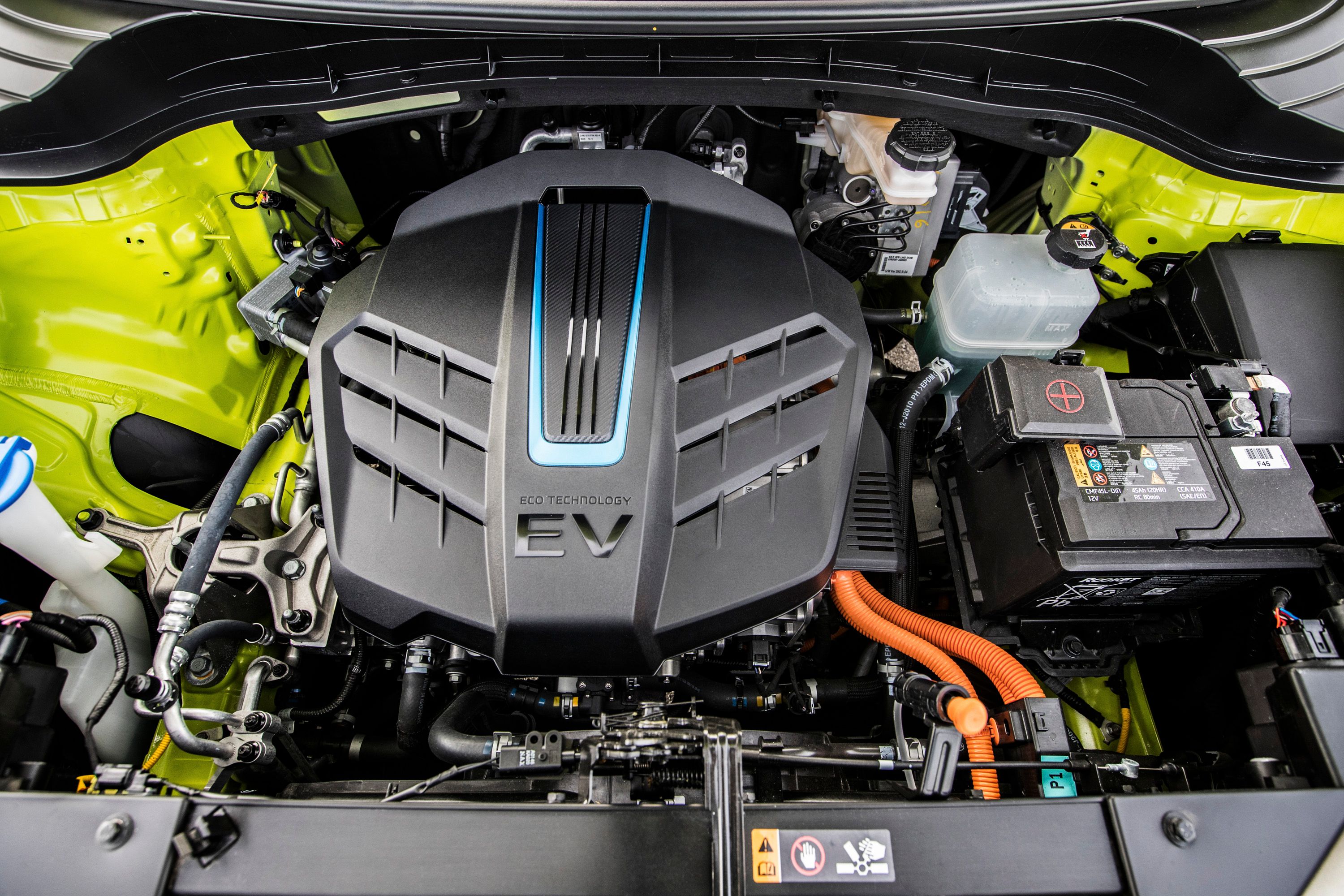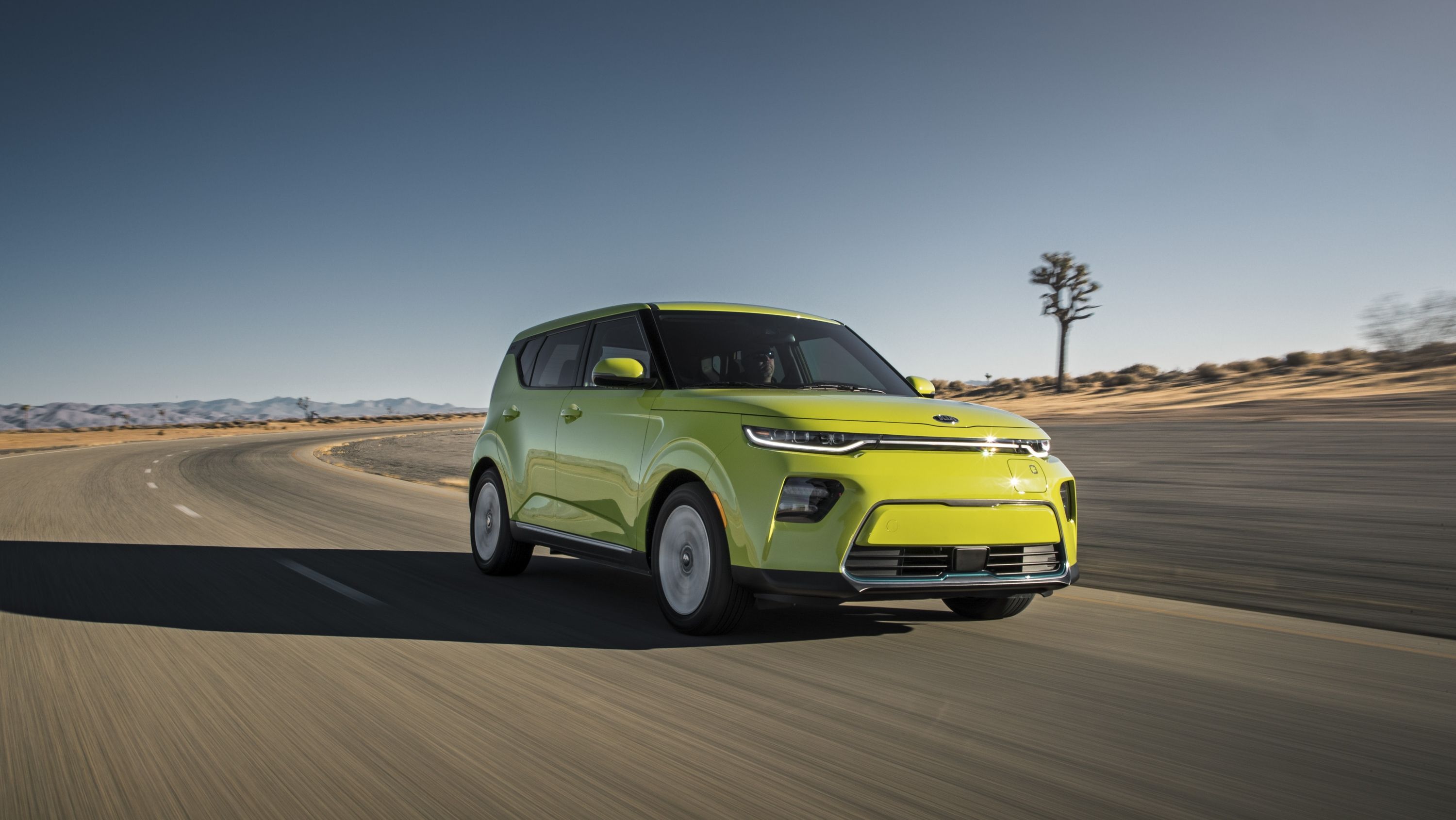Ever since the Kia Soul first broke into the auto scene in 2009, it has carved its own path unique path in the auto industry. Almost ten years later, the Soul is entering its third-generation, and it includes an improved EV model as well. The 2020 Kia Soul EV has arrived, and it’s a far departure from what we know of the Soul’s all-electric model. It has a fresh new look and, more importantly, a bigger battery pack to go with a more potent electric motor. You think that the 2020 Soul EV is the still the same electric crossover from year’s past? You’d be wrong. The 2020 Kia Soul EV will launch sometime in mid-2019 but pricing figures have yet to be announced.
2020 Kia Soul EV
- Make: Array
- Model: 2020 Kia Soul EV
- [do not use] Vehicle Model: Array
2020 Kia Soul EV Exterior
Just as the 2020 Kia Soul arrives with a fresh new look, so too does the 2020 Soul EV. The similarities between the two models are uncanny, but perhaps that’s because no matter the powertrain, it’s still the Kia Soul.
They flank the Soul EV’s front grille, which counts as the most notable stylistic difference between the two versions of the Soul. Whereas the gas version comes with a traditional open mesh grille, the electric version adds a body-color panel on the top half and horizontal bars on the bottom half.
The side profile of the Soul EV shows how upright it remains. The boxy shape of the crossover is certainly part of its charm, though, if you notice, you’ll see that part of the taillamps now bleed into the side profile. The wrap-around look of the taillamps is a solid design touch. Its vertical layout is consistent with the styling cues of the rear section. Since the Soul EV’s roof extends all the way to the back before it drops down vertically, the taillamps help emphasize the crossover’s height. It’s a neat design trick to make the Soul look bigger than it is. But give Kia credit because it works.
For the most part, the 2020 Kia Soul EV doesn’t stray too far away from the design that made the Soul such a unique-looking car in the first place. The visual changes are welcome additions, in part because they bring out a more confident-looking vehicle. We used to think of the Soul as a fun-loving vehicle. That still holds true with the 2020 model, but you can tell that the new Soul EV’s confidence is oozing to the point that it has no problem sticking its chest out.
2020 Kia SOUL EV exterior dimensions
|
Wheelbase (in.) |
102.4 in. |
|
Length (in.) |
165.2 in. |
|
Width (in.) |
70.9 in. |
|
Height (in.) |
63.0 in. |
|
Track, front/rear (in.) |
61.6 in. / 62.0 in. |
|
Overhang, front/rear (in.) |
34.1 in. / 28.7 in. |
|
Min. Ground Clearance (in.) |
6.0 in. |
|
Approach Angle (degree) |
16.2 |
|
Departure Angle (degree) |
29.6 |
2020 Kia Soul EV Interior
The 2020 Kia Soul EV’s interior layout doesn’t change a lot from the model it’s replacing, and that’s a good thing. Despite its stature, the Soul EV has a refined and restrained interior. Don’t expect the cabin to be decked in luxury — it has its share of plastic bits — but it can be dressed up with the right accessories and packages. The dashboard layout remains the same, too.
It’s a subdued design that gives the entire layout a more personal touch. The steering wheel is a bit chunky for my taste, but it’s not big enough to the point that it becomes aesthetically distracting. The Soul EV is also equipped with a six-speaker audio system, including two small speakers sitting next to the corner HVAC vents, designed as if they’re integrated into each other by chrome surrounds. Audio controls for the audio system are found in the chunky steering wheel. The gauges retain their racy look while the dash and door panels continue to wear a soft-touch trim from elbow height and up. Cloth seats also come as standard on the Soul EV, though that can be upgraded to leather-trimmed seats, full leather upholstery, and heated and ventilated front seats, among others.
Interior space in the Soul EV is a mixed bag. On the one hand, it has a spacious cabin that has room for four adults, though that space can be stretched to five adults depending on the size of the occupants. There’s ample legroom, too, even for tall passengers. Rear passengers, specifically, get 36 inches of legroom, more than adequate for the long-limbed lot.
On the other hand, the Soul EV doesn’t have as much cargo space as its gas-powered counterpart. That’s largely due to the battery pack located in the cargo area. Granted, Kia hasn’t announced how much cargo space the 2020 model has, but it’s unlikely that the numbers are going to change from the 2019 model, which offered 18.8 cubic feet of cargo room. Since the Soul EV features a split-folding rear seat, there is the option the stretch that space up to 49.5 cubic feet by folding the rear seats. As intriguing as that is, it still doesn’t measure up to the cargo area of the gas-powered Soul which amounts to 24.2 cubic feet when the seats are in their upright position and an impressive 61.3 cubic feet when they’re folded almost-flat.
The Soul EV isn’t lacking in safety and tech features, either. It’s equipped with Kia’s “Drive Wise” Advanced Driver-Assistance Systems, which includes a suite of driver-assistance technology that should help drivers out on the road. Whether it’s Forward Collision Warning, Lane Departure Warning, Lane Keeping Assist, or Driver Attention Warning, Kia’s Drive Wise system can help you where you need to go.
2020 KIA SOUL EV interior dimensions
|
Head room front/rear inches |
39.9/39.5 |
|
Leg room front/rear inches |
41.1/36.0 |
|
Shoulder room front/rear inches |
55.5/54.7 |
|
Hip room front/rear inches |
53.5/52.8 |
2020 Kia Soul EV Drivetrain
As impressive as the 2019 Kia Soul EV looks, the electric crossover’s biggest victory lies in its improved performance capabilities. Note this: the Soul EV’s performance improvements aren’t incremental; they’re borderline seismic.
There’s no going around it. The 2019 Kia Soul EV is like an entirely new model, at least from a performance point of view. The larger battery pack bumps the Soul EV’s range from what was a pedestrian 111 miles to somewhere in the vicinity of 240 to 258 miles. Granted, Kia hasn’t released the performance numbers of the new Soul EV’s battery pack, but those range estimates come from the range of the long-range versions of the Hyundai Kona Electric and the Kia Niro Electric, respectively. Those two models also carry the same 64 kWh battery pack as the Kia Soul EV. At the very least, look for the Soul EV’s range to double courtesy of the bigger battery pack.
Likewise, the Soul EV’s electric motor is also the same ones you can find in both the long-range versions of the Kona and Niro EVs. Both models use the same battery pack that produces 201 horsepower and 291 pound-feet of torque. The Soul EV gets the same output, which is a significant improvement from its past output. All of this translates to improved performance times for the Soul EV.
DC fast charging will be a standard feature on the 2020 Soul EV, as will variable regenerative braking that's adjustable via steering wheel paddles. This tech feature isn’t a new addition to the Soul EV, but it’s nice to know that it remains in place to provide drivers the ability to capture kinetic energy by slowing the Soul EV down. Doing that comes with the benefits of adding extra range on the crossover, something that nobody should dismiss.
2020 Kia SOUL EV specifications
|
Electric Motor |
|
|
Motor Type |
AC Synchronous Permanent Magnet Motor |
|
Voltage |
356 V |
|
Horsepower |
201 hp (150 kW) @ 3,800-8,000 rpm |
|
Torque |
291 lb.-ft. (395 Nm) @ 0-3,600 rpm |
|
Battery Type |
Lithium Ion Polymer Battery (LIPO) |
|
Battery Voltage (V) |
356 V |
|
Battery Capacity (Ah) |
180 Ah |
|
Battery Energy (kWh) |
64 kWh |
|
Battery Power (kW) |
170 kW |
|
Weight |
1,008 lbs. |
|
Battery Cell Materials |
Nickel, Cobalt, Manganese (NCM) |
|
Cooling System |
Liquid, via front-mounted radiator and A/C system |
|
Transmission Type |
Gear Reduction Unit |
|
Final Gear Ratio (Constant) |
8.206:1 |
|
Max. Speed (mph) |
104 |
|
Acceleration performance (sec) |
|
|
0 - 62.1 mph |
7.6 |
|
49.7 - 74.6 mph |
4.8 |
|
Brake Performance (ft.) |
|
|
62.1 - 0 mph |
137 ft. |
2020 Kia Soul EV Pricing
Kia hasn’t announced pricing details for the 2020 Soul EV, but given the wholesale improvements made to the crossover, you can expect to pay a lot more for the opportunity to bring one home. As it is, the 2019 Soul EV comes with a base price of $33,950. The higher-trim model, the Soul EV+, on the other hand, starts at $35,950. Considering the bigger battery pack and the more potent electric motor, it’s possible that the 2020 Kia Soul EV could fetch a starting price in the vicinity of $37,000 to $38,000. The good news is that the Kia Soul EV should still have a federal tax credit of $7,500.
2020 Kia Soul EV Competition
Hyundai Kona Electric
The Hyundai Kona Electric is a lot like the Kia Soul EV’s brother from another mother. Like the Soul, the Kona Electric features a 64 kWh battery that produces 201 horsepower and 291 pound-feet of torque. This battery helps the Kona Electric sprint from 0 to 60 mph in 7.6 seconds to go with a top speed of 104 mph. Unlike the Soul, the Kona Electric has a less powerful alternative, one that comes with a 39.2 kWh battery pack that produces 132 horsepower and the same amount of torque at 291 pound-feet. It’s not as fast to 60 mph — 9.3 seconds — but it does have a surprisingly long range of 186 miles. The variety is a plus for the Kona, but don’t sleep on the Soul EV just yet. Both models come with well-appointed cabins, but the Soul EV is the hands-down winner in cargo volume with around 18.8 cubic feet of cargo room with the seats up. The Kona Electric pales in comparison with its 11.7 cubic feet of cargo room. Fold the seats down, and it’s still not close. The Kona Electric can only accommodate 39.3 cubic feet of storage while the Soul EV has 49.5 cubic feet of space to play around with.
Like most EVs, charging the Kona Electric's battery pack takes time. It's just a matter of how much time you have to spare. If you can wait, you can plug the EV to a 120-volt power source and wait a whopping 33 hours for the battery pack to fully recharge. Use a 240-volt power source and that cuts the time to a little over 10 hours. You can also opt for a DC 100-kW quick charge, which returns 80-percent capacity in about 60 minutes. Hyundai hasn’t released the official price for the Kona Electric, but expect the automaker to announce it soon with the EV crossover set to launch in early 2019. In the meantime, look for the Kona Electric to carry a price of about $37,000.
Read our full review on the 2019 Hyundai Kona Electric
Chevrolet Bolt EV
The Chevrolet Bolt EV has been a big player in this segment since the five-door hatchback hit production in 2016. It doesn’t have as big of a battery as the Soul EV, but the gap isn’t that big with the Bolt carrying a 60 kWh unit that sends juice to the electric motor, producing 200 horsepower and 266 pound-feet of torque. Those figures are enough to catapult the Bolt from 0 to 60 mph in 6.5 seconds before hitting a top speed of 93 mph. The Bolt also returns an EPA-estimated range of 238 miles on a single charge, which is impressive in its own right. Chevy’s resident subcompact EV also has a bigger-than-you-think interior, highlighted by a cargo area that can transport as much as 16.9 cubic feet of cargo. It’s not as big as the Soul EV’s own cargo area, but it’s close enough to warrant consideration. Like the Soul EV, the Bolt EV also features regenerative braking so you can earn back some of the range you lose while driving the car. In the event that you run out of juice, you can plug in the car at a 120-volt outlet, and you can top up the battery completely in 26 hours. If you can’t wait that long, a 240-volt outlet can do the deed in eight hours. And if really can’t sleep on it while it’s charging, you can avail of the DC quick charging option for an extra $750 and the charge time drops to around 75 minutes. The Chevrolet Bolt EV starts at $36,620.
Read our full review on the 2018 Chevrolet Bolt EV
Final Thoughts
The 2020 Kia Soul EV is all grown up. No longer is it the kind of EV you'd consider if you're on a tight budget. It's become the kind of EV you'd consider as a daily driver. Its sharp new look doesn't do justice to the important changes that went into increasing the capacity of the battery pack. There was once a time when the Soul EV was looked at as a novelty model. Those days are gone. The 2020 Kia Soul EV is going to be a big player in its segment for years to come, at least if Kia finds a way to make it available in more places.
Further reading
2020 Kia SOUL Arrives With a Fresh Redesign That Doubles Down on The Quirkiness
The 2020 Kia Soul Doubles Down on Range- Literally
Read our full speculative review on the 2019 Kia SOUL.
Read our full review on the 2015 Kia Soul EV.
Read our full review on the 2017 Kia SOUL Turbo.
Read our full review on the 2014 Kia Soul.

